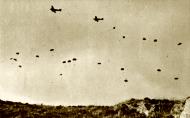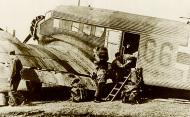Collection of photos about the battle of Crete
2nd Yorks n Lancs Regt defence of Suda Bay Crete 15 Oct 1940 IWM E1192
2nd Yorks n Lancs Regt defence of Suda Bay Crete 15 Oct 1940 IWM E1193
2nd Yorks n Lancs Regt defence of Suda Bay Crete 15 Oct 1940 IWM E1194
AA gun on look out for Italian raiders with Greek and British soldiers IWM E1172
AA guns coming off a warship IWM E1161
A British lorry giving a lift to inhabitants IWM E1177
A crashed German glider with two of its occupants lying dead alongside 6 June 1941 IWM E3064E
A dead German paratrooper May 1941 picture by Propaganda Kompanie 690 Bundesarchiv
A Fallschirmjager and a DFS 230 glider in Crete Bundesarchiv
A group of British soldiers in a trench with fixed bayonets IWM E3025E
Alexander Lohr (left) and Wolfram von Richthofen 1942 Bundesarchiv
Anti aircraft defences on the coast Suda Bay Crete IWM E1189
Anti aircraft guns erected for defence of Suda Bay Crete 15 Oct 1940 IWM E1190
Anti aircraft guns erected for defence of Suda Bay Crete 15 Oct 1940 IWM E1191
Battle of Cape Matapan map summary of 28th March 1941 web 01
Battle of Cape Spada HMAS Sydney attacking the Bartolomeo Colleoni IWM A218
Bishop of Canea blessing Bren carriers and light tanks Crete 15 Oct 1940 IWM E1197
Bishop of Canea blessing Bren carriers and light tanks Crete 15 Oct 1940 IWM E1198
Bishop of Canea blessing Bren carriers and light tanks Crete 15 Oct 1940 IWM E1202
Bishop of Canea blessing Bren carriers and light tanks Crete 15 Oct 1940 IWM E1204
Bishop of Canea blessing Bren carriers and light tanks Crete 15 Oct 1940 IWM E1206
Bombing of Heraklion aerodrome in Crete by the Luftwaffe June 1941 IWM A4156
British lorry and trailer burning after being attacked by Luftwaffe aircraft 25 June 1941 IWM E3142E
Camouflaged 4 inch naval guns east of Heraklion Crete May 1941 IWM HU2667
DFS 230A1 White 3 transport glider most likely at Crete 1941 ebay 01
Enigma encryption machine 1940 wiki 01
Evacuated wounded soldier being brought ashore on a stretcher at an Egyptian port IWM E3284
Evacuation of British wounded to Alexandria 1941 IWM E3282
German airman recording the sinking of HMS Gloucester off the coast of Crete 22 May 1941 IWM HU1997B
German airman recording the sinking of HMS Gloucester off the coast of Crete 22 May 1941 IWM HU1997D
German mountain troops board a Junkers Ju 52 for Crete 20th May 1941 IWM HU52264
German mountain troops prepare to board their Junkers Ju 52s for Crete 20th May 1941 Bund
German prisoners under British guard 6 June 1941 IWM E3066E
German soldiers pause before the graves of their comrades Bundesarchiv
Greek and British soldiers enjoy a cup of tea IWM E1170
HMAS Sydney as she approaches Suda Bay Crete 14 Nov 1940 IWM E1151
HMAS Sydney as she approaches Suda Bay Crete 14 Nov 1940 IWM E1152
HMAS Sydney as she approaches Suda Bay Crete 14 Nov 1940 IWM E1153
HMAS Sydney as she approaches Suda Bay Crete 14 Nov 1940 IWM E1154
HMAS Sydney at Port Said 14 Nov 1940 IWM E1149
HMAS Sydney with HMS Ajax approaching Suda Bay Crete 14 Nov 1940 IWM E1150
HMS Barham oiling in Suda Bay Battle of Crete Greece IWM AX28A
HMS Barham oiling in Suda Bay Battle of Crete Greece IWM AX28Ab
HMS Cumberland in Grand Harbour Malta IWM A31120
HMS Jackal skilfully avoids a stick of bombs during an attack on her off Crete IWM A4200
HMS Tuberose a Q boat in Suda Bay Crete 1940 IWM Q14030
Italian marines machine gun team takes position after landing at Sitia Crete 27th May 1941 01
Italian Navy Captain Francesco Mimbelli 1941 wiki 01
Italian Navy Spica class torpedo boat named Sagittario launched in 1936 wiki 01
Junkers Ju 52 3mg4e ferrying in supplies prior to operation Mercury 1941 01
Junkers Ju 52 3mg4e ferrying in supplies prior to operation Mercury 1941 02
Junkers Ju 52 3mg4e Geschwader Stab KGrzbV1 1ZBA wrecked on Maleme AF Crete 1941 01
Junkers Ju 52 3mg4e Geschwader Stab KGrzbV1 1ZBA wrecked on Maleme AF Crete 1941 02
Junkers Ju 52 4UNH Operation Merkur Crete May 1941 eduard 0A
Junkers Ju 52 4UNH Operation Merkur Crete May 1941 eduard 0B
Junkers Ju 52 Geschwader Stab KGrzbV1 Z1AA wrecked at Crete ebay 01
Junkers Ju 52 shot down by anti aircraft gunfire during the invasion of Crete 1941 01
Junkers Ju 52 shot down by anti aircraft gunfire during the invasion of Crete 1941 IWM A4154
Junkers Ju 52 shot down by anti aircraft gunfire during the invasion of Crete 1941 IWM A4155
Junkers Ju 52 shot down by anti aircraft gunfire near Heraklion Crete 20 May 1941 IWM A4142
Junkers Ju 52 shot down by anti aircraft gunfire near Heraklion Crete 20 May 1941 IWM A4143
Junkers Ju 52 shot down by anti aircraft gunfire near Heraklion Crete 20 May 1941 IWM A4144
Junkers Ju 52 shot down by anti aircraft gunfire near Heraklion Crete 20 May 1941 IWM A4145
Junkers Ju 52 shot down by anti aircraft gunfire near Heraklion Crete 20 May 1941 IWM A4146
Junkers Ju 52 shot down by anti aircraft gunfire near Heraklion Crete 20th May 1941 IWM
Keeping a look out on board HMS KELVIN for possible periscope IWM A4202
Major General Bernard Freyberg VC r Allied Commander at the Battle of Crete IWM E3020E
Maleme airfield Crete damaged and destroyed Junkers Ju 52s lay over the airfield 1941 Bundesarchiv
Maleme airfield Crete Junkers Ju 52/3mg4e wrecked on Maleme AF Crete 1941 01
Maleme airfield Crete Junkers Ju 52/3mg4e wrecked on Maleme AF Crete 1941 02
Maleme airfield Crete Junkers Ju 52/3mg4e wrecked on Maleme AF Crete 1941 03
Map of occupied Greece showing the German and Italian occupation zones on Crete 0A
Map showing the Battle of Crete 1941 wiki 0A
Massacre of Cretan civilians at Kondomari Crete 1941 Bundesarchiv
MV Brisbane Star delivers supplies to Crete as troops help move artillery Nov 1941 IWM E1164
MV Brisbane Star delivers supplies to Crete as troops help move artillery Nov 1941 IWM E1165
Painting of Rear Admiral Rawlings force under attack on 28th May 1941 wiki 01
Palls of smoke rise above the Cretan countryside May 1941 IWM E3040E
Reinforcing Crete MT being disembarked from the warship IWM E1161
Reinforcing Crete scene on the quayside as the warship was disembarking men and material IWM E1157
Reinforcing Crete scene on the quayside as the warship was disembarking men and material IWM E1158
Reinforcing Crete scene on the quayside as the warship was disembarking men and material IWM E1159
Reinforcing Crete scene on the quayside on the arrival of some of the British troops IWM E1173
Reinforcing Crete scene on the quayside on the arrival of some of the British troops IWM E1175
Reinforcing Crete scene on warship as she approaches Crete IWM E1156
Reinforcing Crete soldiers disembarking from a transport IWM E1163
Reinforcing Crete soldiers marching from the warship after disembarking IWM E1166
Reinforcing Crete unloading a case containing parts of big guns IWM E1162
Royal Navy 805NAS Brewster 339B Buffaloes AS419, AS420 n AX814 were left unservicable on Crete 01
Suda Bay smoke hanging over where two ships hit by German bombers burn themselves out IWM E3039E
Suda Bay where two ships hit by German bombers are burning 25 June 1941 IWM E3138E
Suda Bay where two ships hit by German bombers are burning 25 June 1941 IWM E3140E
The GOC in C inspecting the building of defences being made by British troops IWM E1179
The GOC in C inspecting the building of defences being made by British troops IWM E1180
The GOC in C inspecting the building of defences being made by British troops IWM E1182
The GOC in C inspecting the building of defences being made by British troops IWM E1185
The GOC in C inspecting the building of defences being made by British troops IWM E1186
The GOC in C inspecting the building of defences being made by British troops IWM E1187
The GOC in C inspecting the building of defences being made by British troops IWM E1188
Unternehmen Merkur attacking Fallschirmjager Battle of Crete 1941 Bundesarchiv
Unternehmen Merkur DFS 230 gliders during the invasion of Crete 1941 01
Unternehmen Merkur German parachute troops descending IWM A4149
Unternehmen Merkur German paratroopers (Fallschirmjager) landing on Crete May 1941 Bundesarchiv
Unternehmen Merkur German paratroopers dropped during the invasion of Crete 1941 01
Unternehmen Merkur German paratroopers jumping From Ju 52s over Crete May 1941 IWM E3265E
Unternehmen Merkur German paratroopers landing on Crete 29th May 1941 NIOD
Unternehmen Merkur Junkers Ju 52 3./KGrzbV106 9PBL Crete May 1941 01
Unternehmen Merkur Junkers Ju 52/3m dropping paratroopers over Crete 1941 NIOD
Unternehmen Merkur Junkers Ju 52/3mg4e ferrying in supplies prior to operation Mercury 1941 01
Unternehmen Merkur Junkers Ju 52/3mg4e KGrzbV106 on Maleme AF Crete 1941 01
Unternehmen Merkur Junkers Ju 52/3mg4e KGrzbV2 during the invasion of Crete 1941 01
Unternehmen Merkur Junkers Ju 52/3mg4e KGrzbV2 G6 during the invasion of Crete 1941 01
Unternehmen Merkur Junkers Ju 52/3mg4e over Greece 1941 01
Unternehmen Merkur Junkers Ju 52/3mg4e towing DFS 230 during the invasion of Crete 1941 01
Unternehmen Merkur Junkers Ju 52/3mg4e towing DFS 230 during the invasion of Crete 1941 02
War Cemetery at Souda Bay Allied wiki 01
War Memorial for Greek and Australian soldiers in the centre of Rethymno wiki 01

The Battle of Crete in a nutshell
Date:- to (13 days) Location:- Crete, Greece Result:- Axis victory
The Belligerents involved during the Battle of Crete
Germany United Kingdom Italy (from 10 June) Greece New Zealand Australia
The Commanders and leaders involved during the Battle of Crete
Axis armies Allied armies Nazi Germany Kurt Student New Zealand Bernard C. Freyberg Nazi Germany Walter Koch Fascist Italy (1922-1943) Francesco Mimbelli
Unit Strength involved during the Battle of Crete
Axis armies Allied armies German armies: United Kingdom: 18,047[1][N1] 22,000 paratroopers and mountain troops[3] Greece: 10,258[1] – 11,451[2] 280 bombers 150 dive bombers with 180 fighters New Zealand: 7,702[1] 500 transports including 80 troop gliders Australia: 6,540[1] Italy: 2,700 Total: 42,547[1]
Casualties and losses during the Battle of Crete
Axis Personnel Allied Personnel 5,894 casualties[4] ~23,000 total casualties[4] 4,000 to 6,000 killed[5] Luftwaffe: (including aircrew losses)[9] British Commonwealth[6] 1,032 KIA
1,632 WIA
2,097 MIA3,579+ KIA, MIA
1,918 WIA
12,254 POW5th Mountain Division:[10] Greek:[7] 321 KIA
488 WIA
324 MIA544+ KIA, MIA
5,225 POW
Over 500 Greek civilians executed by Axis soldiersEquipment lost during the Battle of Crete
Luftwaffe: 284 aircraft lost, 125 damaged[11][N3] Royal Air Force: 21 aircraft shot down and 12 aircraft destroyed on ground Italian Navy: 1 Italian destroyer damaged and
1 Italian torpedo boat damagedRoyal Navy:[8][N2] 12 fleet and 7 auxiliary ships sunk, 22 damaged *Battle of Cape Matapan casualties and losses
Italian Navy: 2,300 killed 1,015 captured
3 heavy cruisers sunk
2 destroyers sunk
'Vittorio Alfieri' and 'Giosuè Carducci'
1 battleship damaged
1 destroyer damagedRoyal Navy: 1 torpedo bomber shot down 3 KIA
4 light cruisers damaged
1 aircraft destroyedAsisbiz: *The Battle of Cape Matapan is often overlooked by historians when dealing with the Battle of Crete. It provided a vital out come for the Royal Navy as it almost took out the Italian Fleet and one could question was it at the expense of Crete? The fact that Ultra was passing information to the Royal Naval and therefore would of given them information as to what the Axis forces where plaining.
Battle of Crete
The Battle of Crete (German: Luftlandeschlacht um Kreta, also Unternehmen Merkur, 'Operation Mercury', Greek: Μάχη της Κρήτης) was fought during the Second World War on the Greek island of Crete. It began on the morning of 20 May 1941, when Nazi Germany began an airborne invasion of Crete. Greek and other Allied forces, along with Cretan civilians, defended the island.[12] After one day of fighting, the Germans had suffered heavy casualties and the Allied troops were confident that they would defeat the invasion. The next day, through communication failures, Allied tactical hesitation and German offensive operations, Maleme Airfield in western Crete fell, enabling the Germans to land reinforcements and overwhelm the defensive positions on the north of the island. Allied forces withdrew to the south coast. More than half were evacuated by the British Royal Navy and the remainder surrendered or joined the Cretan resistance. The defence of Crete evolved into a costly naval engagement; by the end of the campaign the Royal Navy's eastern Mediterranean strength had been reduced to only two battleships and three cruisers.[13]
The Battle of Crete was the first occasion where Fallschirmjäger (German paratroops) were used en masse, the first mainly airborne invasion in military history, the first time the Allies made significant use of intelligence from decrypted German messages from the Enigma machine,[14][15] and the first time German troops encountered mass resistance from a civilian population.[16] Due to the number of casualties and the belief that airborne forces no longer had the advantage of surprise, Adolf Hitler became reluctant to authorise further large airborne operations, preferring instead to employ paratroopers as ground troops.[17] In contrast, the Allies were impressed by the potential of paratroopers and started to form airborne-assault and airfield-defence regiments.
Background
Battle of Greece
British forces had initially garrisoned Crete when the Italians attacked Greece on 28 October 1940,[18] enabling the Greek government to employ the Fifth Cretan Division in the mainland campaign.[19] This arrangement suited the British: Crete could provide the Royal Navy with excellent harbours in the eastern Mediterranean, from which it could threaten the Axis south-eastern flank,[20] and the Ploiești oil fields in Romania would be within range of British bombers based on the island.
The Italians were repulsed, but the subsequent German invasion of April 1941 (Operation Marita), succeeded in overrunning mainland Greece. At the end of the month, 57,000 Allied troops were evacuated by the Royal Navy. Some were sent to Crete to bolster its garrison until fresh forces could be organised, although most had lost their heavy equipment.[21] Winston Churchill, the British Prime Minister, sent a telegram to the Chief of the Imperial General Staff, General Sir John Dill: "To lose Crete because we had not sufficient bulk of forces there would be a crime."[22]
Oberkommando des Heeres (OKH, German army high command) was preoccupied with Operation Barbarossa, the invasion of the Soviet Union, and was largely opposed to a German attack on Crete.[23] However, Hitler remained concerned about attacks in other theatres, in particular on his Romanian fuel supply,[19] and Luftwaffe commanders were enthusiastic about the idea of seizing Crete by a daring airborne attack.[24] The desire to regain prestige after their defeat by the Royal Air Force (RAF) in the Battle of Britain the year before, may also have played a role in their thinking, especially before the advent of the much more important invasion of the Soviet Union.[25] Hitler was won over by the audacious proposal and in Directive 31 he asserted that "Crete... will be the operational base from which to carry on the air war in the Eastern Mediterranean, in co-ordination with the situation in North Africa."[26] The directive also stated that the operation was to be in May[25] and must not be allowed to interfere with the planned campaign against the Soviet Union.[25] Before the invasion, the Germans conducted a bombing campaign to establish air superiority and forced the RAF to move its remaining aeroplanes to Alexandria.[27]
Prelude
Battle of Crete order of battle
Allied forces
No RAF units were based permanently at Crete until April 1941, but airfield construction had begun, radar sites built and stores delivered. Equipment was scarce in the Mediterranean and in the backwater of Crete. The British forces had seven commanders in seven months. In early April, airfields at Maleme and Heraklion and the landing strip at Rethymno on the north coast were ready and another strip at Pediada-Kastelli was nearly finished. After the German invasion of Greece, the role of the Crete garrison changed from the defence of a naval anchorage to preparing to repel an invasion. On 17 April, Group Captain George Beamish was appointed Senior Air Officer, Crete, taking over from a flight-lieutenant whose duties and instructions had been only vaguely defined. Beamish was ordered to prepare the reception of the Bristol Blenheim bombers of 30 and 203 Squadrons from Egypt and the remaining fighter aircraft from Greece, to cover the evacuation of W Force, which enabled the transfer of 25,000 British and Dominion troops to the island, preparatory to their relief by fresh troops from Egypt.[28]
The navy tried to deliver 27,000 long tons (27,000 t) of supplies from 1–20 May 1941, but Luftwaffe attacks forced most ships to turn back, and only 2,700 long tons (2,700 t) were delivered. Only about 3,500 trained British and Greek soldiers were on the island, and the defence devolved to the shaken and poorly equipped troops from Greece, assisted by the last fighters of 33, 80 and 112 Squadrons and a squadron of the Fleet Air Arm, once the Blenheims were ordered back to Egypt. In mid-May, the four squadrons had about two dozen aircraft, of which only about twelve were serviceable due to a lack of tools and spares. The unfinished ground at Pediada-Kastelli was blocked with trenches and heaps of soil and all but narrow flight paths were blocked at Heraklion and Rethymno by barrels full of earth. At Maleme, blast pens were built for the aircraft, and barrels full of petrol were kept ready to be ignited by machine-gun fire. Around each ground, a few field guns, anti-aircraft guns, two infantry tanks and two or three light tanks were sited. The three areas were made into independent sectors, but there were only eight QF 3-inch and twenty Bofors 40 mm anti-aircraft guns.[29]
Major-General Freyberg (right), Allied Commander at the Battle of Crete
On 30 April 1941, Major-General Bernard Freyberg VC a New Zealand Army officer, was appointed commander of the Allied forces on Crete (Creforce).[30] By May, the Greek forces consisted of approximately 9,000 troops: three battalions of the 5th Greek Division, which had been left behind when the rest of the unit had been transferred to the mainland against the German invasion; the Cretan Gendarmerie (2.500 men); the Heraklion Garrison Battalion, a defence unit made up mostly of transport and supply personnel; and remnants of the 12th and 20th Greek Divisions, which had also escaped from the mainland to Crete and were organised under British command. Cadets from the Gendarmerie academy and recruits from Greek training centres in the Peloponnese had been transferred to Crete to replace the trained soldiers sent to fight on the mainland. These troops were already organised into numbered recruit training regiments, and it was decided to use this structure to organise the Greek troops, supplementing them with experienced men arriving from the mainland.
The British Commonwealth contingent consisted of the original 14,000-man British garrison and another 25,000 British and Commonwealth troops evacuated from the mainland. The evacuees were typically intact units; composite units improvised locally; stragglers from every type of army unit; and deserters; most of them lacked heavy equipment. The main formed units were the 2nd New Zealand Division, less the 6th Brigade and division headquarters; the 19th Australian Brigade Group; and the 14th Infantry Brigade of the British 6th Division. There were about 15,000 front-line Commonwealth infantry, augmented by about 5,000 non-infantry personnel equipped as infantry and a composite Australian artillery battery.[31] On 4 May, Freyberg sent a message to the British commander in the Middle East, General Archibald Wavell, requesting the evacuation of about 10,000 unwanted personnel who did not have weapons and had "little or no employment other than getting into trouble with the civil population". As the weeks passed, some 3,200 British, 2,500 Australian and 1,300 New Zealander troops were evacuated to Egypt, but it became evident that it would not be possible to remove all the unwanted troops. Between the night of 15 May and morning of 16 May, the allied forces were reinforced by the 2nd Battalion of the Leicester Regiment, which had been transported from Alexandria to Heraklion by HMS Gloucester and HMS Fiji.[32]
On 17 May, the garrison on Crete included about 15,000 Britons, 7,750 New Zealanders, 6,500 Australians and 10,200 Greeks.[33] On the morning of 19 May, these were augmented by a further 700 men of the Argyll and Sutherland Highlanders, who had been transported from Alexandria to Tymbaki overnight by HMS Glengyle.[32]
Axis forces
The DFS 230 glider in Crete
A Fallschirmjäger and a DFS 230 glider in Crete
German mountain troops board a Junkers Ju 52 for Crete, 20 May 1941.
On 25 April, Hitler signed Directive 28, ordering the invasion of Crete. The Royal Navy retained control of the waters around Crete, so an amphibious assault would have been a risky proposition. With German air superiority assured, an airborne invasion was chosen. This was to be the first big airborne invasion, although the Germans had made smaller parachute and glider-borne assaults in the invasions of Denmark and Norway, Belgium, the Netherlands, France and mainland Greece. In Greece, Fallschirmjäger had been dispatched to capture the bridge over the Corinth Canal, which was being readied for demolition by the Royal Engineers. German engineers landed near the bridge in gliders, while parachute infantry attacked the perimeter defence. The bridge was damaged in the fighting, which slowed the German advance and gave the Allies time to evacuate 18,000 troops to Crete and 23,000 to Egypt, albeit with the loss of most of their heavy equipment.[34]
In May, Fliegerkorps XI moved from Germany to the Athens area, but the destruction wrought during the invasion of Greece forced a postponement of the attack to 20 May. New airfields were built, and 280 long-range bombers, 150 dive-bombers, 90 Bf 109s, 90 Bf 110s and 40 reconnaissance aircraft of Fliegerkorps VIII were assembled, along with 530 Ju 52 transport aircraft and 100 gliders. The Bf 109s and Stuka dive-bombers were based on forward airfields at Molaoi, Melos and Karpathos (then Scarpanto), with Corinth and Argos as base airfields. The Bf 110s were based at airfields near Athens, Argos and Corinth, all within 200 mi (320 km) of Crete, and the bomber or reconnaissance machines were accommodated at Athens, Salonica and a detachment on Rhodes, along with bases in Bulgaria at Sofia and Plovdiv, ten of the airfields being all-weather and 200–250 miles (320–400 km) from Crete. The transport aircraft flew from bases near Athens and southern Greece, including Eleusis, Tatoi, Megara and Corinth. British night bombers attacked the areas in the last few nights before the invasion, and Luftwaffe aircraft eliminated the British aircraft on Crete.[35]
German Mountain troops prior to their transfer to Crete.
The Germans planned to use Fallschirmjäger to capture important points on the island, including airfields that could then be used to fly in supplies and reinforcements. Fliegerkorps XI was to co-ordinate the attack by the 7th Flieger Division, which would land by parachute and glider, followed by the 22nd Air Landing Division once the airfields were secure. The operation was scheduled for 16 May 1941, but was postponed to 20 May, with the 5th Mountain Division replacing the 22nd Air Landing Division. To support the German attack on Crete, eleven Italian submarines took post off Crete or the British bases of Sollum and Alexandria in Egypt.[36][N4]
Intelligence
British
It had only been in March 1941, that Student added an attack on Crete to Operation Marita; supply difficulties delayed the assembly of Fliegerkorps XI and its 500 Ju 52s, then more delays forced a postponement until 20 May 1941. The War Cabinet in Britain had expected the Germans to use paratroops in the Balkans, and on 25 March, British decrypts of Luftwaffe Enigma wireless traffic revealed that Fliegerkorps XI was assembling Ju 52s for glider-towing, and British Military Intelligence reported that 250 aircraft were already in the Balkans. On 30 March, Detachment Süssmann, part of the 7th Fliegerdivision, was identified at Plovdiv. Notice of the target of these units did not arrive, but on 18 April it was found that 250 Ju 52s had been withdrawn from routine operations, and on 24 April it became known that Göring had reserved them for a special operation. The operation turned out to be a descent on the Corinth Canal on 26 April, but then a second operation was discovered and that supplies (particularly of fuel), had to be delivered to Fliegerkorps XI by 5 May; a Luftwaffe message referred to Crete for the first time was decrypted on 26 April.[37]
The British Chiefs of Staff were apprehensive that the target could be changed to Cyprus or Syria as a route into Iraq during the Anglo-Iraqi War (2–31 May 1941) and suspected that references to Crete were a deception, despite having no grounds for this, and on 3 May Churchill thought that the attack might be a decoy. The command in Crete had been informed on 18 April, despite the doubts, and Crete was added to a link from the GC & CS to Cairo, while on 16 and 21 April, intelligence that airborne operations were being prepared in Bulgaria was passed on. On 22 April, the HQ in Crete was ordered to burn all material received through the Ultra link, but Churchill ruled that the information must still be provided. When Freyberg took over on 30 April, the information was disguised as information from a spy in Athens. Remaining doubts about an attack on Crete were removed on 1 May, when the Luftwaffe was ordered to stop bombing airfields on the island and mining Souda Bay and to photograph all of the island. By 5 May, it was clear that the attack was not imminent and next day, 17 May was revealed as the expected day for the completion of preparations, along with the operation orders for the plan from the D-day landings in the vicinity of Maleme and Chania, Heraklion and Rethymno.[37]
German
Alexander Löhr (left) and Wolfram von Richthofen (1942)
Admiral Wilhelm Canaris, chief of the Abwehr, originally reported 5,000 British troops on Crete and no Greek forces. It is not clear whether Canaris, who had an extensive intelligence network at his disposal, was misinformed or was attempting to sabotage Hitler's plans (Canaris was killed much later in the war for supposedly participating in the 20 July Plot). Abwehr also predicted the Cretan population would welcome the Germans as liberators, due to their strong republican and anti-monarchist feelings and would want to receive the "... favourable terms which had been arranged on the mainland ..."[38] While the late republican prime minister of Greece, Eleftherios Venizelos, had been a Cretan and support for his ideas was strong on the island, the Germans seriously underestimated Cretan loyalty. King George and his entourage escaped from Greece via Crete, with the help of Greek and Commonwealth soldiers, Cretan civilians and even a band of prisoners who had been released from captivity by the Germans. 12th Army Intelligence painted a less optimistic picture, but also underestimated the number of British Commonwealth forces and the number of Greek troops who had been evacuated from the mainland. General Alexander Löhr, the theatre commander, was convinced the island could be taken with two divisions, but decided to keep 6th Mountain Division in Athens as a reserve.
Weapons and equipment
German
The Germans used the new 7.5 cm Leichtgeschütz 40 light gun (a recoilless rifle). At 320 lb (150 kg), it weighed 1⁄10 as much as a standard German 75 mm field gun, yet had 2⁄3 of its range. It fired a 13 lb (5.9 kg) shell more than 3 mi (4.8 km). A quarter of the German paratroops jumped with an MP 40 submachine gun, often carried with a bolt-action Karabiner 98k rifle and most German squads had an MG 34 machine gun.[39] The Germans used colour-coded parachutes to distinguish the canisters carrying rifles, ammunition, crew-served weapons and other supplies. Heavy equipment like the Leichtgeschütz 40 were dropped with a special triple-parachute harness to bear the extra weight.
The troops also carried special strips of cloth to unfurl in patterns to signal to low-flying fighters, to co-ordinate air support and for supply drops. The German procedure was for individual weapons to be dropped in canisters, due to their practice of exiting the aircraft at low altitude. This was a flaw that left the paratroopers armed only with knives, pistols and grenades in the first few minutes after landing. Poor design of German parachutes compounded the problem; the standard German harness had only one riser to the canopy and could not be steered. Even the 25 percent of paratroops armed with sub-machine guns were at a disadvantage, given the weapon's limited range. Many Fallschirmjäger were shot before they reached weapons canisters.
Greek
Greek troops were armed with Mannlicher–Schönauer 6.5 mm mountain carbines or ex-Austrian 8x56R Steyr-Mannlicher M1895 rifles, the latter a part of post-World War I reparations; about 1,000 Greeks carried antique Fusil Gras mle 1874 rifles. The garrison had been stripped of its best crew-served weapons, which were sent to the mainland; there were twelve obsolescent St. Étienne Mle 1907 light machine-guns and forty miscellaneous LMGs. Many Greek soldiers had fewer than thirty rounds of ammunition but could not be supplied by the British, who had no stocks in the correct calibres. Those with insufficient ammunition were posted to the eastern sector of Crete, where the Germans were not expected in force. The 8th Greek Regiment was under strength and many soldiers were poorly trained and poorly equipped. The unit was attached to 10th New Zealand Infantry Brigade (Brigadier Howard Kippenberger), who placed it in a defensive position around the village of Alikianos where, with local civilian volunteers, they held out against the German 7th Engineer Battalion.
Though Kippenberger had referred to them as "...nothing more than malaria-ridden little chaps...with only four weeks of service," the Greek troops repulsed German attacks until they ran out of ammunition, whereupon they began charging with fixed bayonets, overrunning German positions and capturing rifles and ammunition. The engineers had to be reinforced by two battalions of German paratroops, yet the 8th Regiment held on until 27 May, when the Germans made a combined arms assault by Luftwaffe aircraft and mountain troops. The Greek stand helped to protect the retreat of the Commonwealth forces, who were evacuated at Sfakia. Beevor and McDougal Stewart write that the defence of Alikianos gained at least 24 more hours for the completion of the final leg of the evacuation behind Layforce. The troops who were protected as they withdrew had begun the battle with more and better equipment than the 8th Greek Regiment.
British Commonwealth
British and Commonwealth troops used the standard Lee–Enfield rifle, Bren light machine gun and Vickers medium machine gun. The British had about 85 artillery pieces of various calibres, many of them captured Italian weapons without sights.[40] Anti-aircraft defences consisted of one light anti-aircraft battery equipped with 20 mm automatic cannon, split between the two airfields. The guns were camouflaged, often in nearby olive groves, and some were ordered to hold their fire during the initial assault to mask their positions from German fighters and dive-bombers. The British had nine Matilda IIA infantry tanks of "B" Squadron, 7th Royal Tank Regiment (7th RTR) and sixteen Light Tanks Mark VIB from "C" Squadron, 3rd King's Own Hussars.[41]
The Matildas had 40 mm Ordnance QF 2 pounder guns, which only fired armour-piercing rounds – not effective anti-personnel weapons. (High explosive rounds in small calibres were considered impractical).[41] The tanks were in poor mechanical condition, as the engines were worn and could not be overhauled on Crete. Most tanks were used as mobile pillboxes to be brought up and dug in at strategic points. One Matilda had a damaged turret crank that allowed it to turn clockwise only. Many British tanks broke down in the rough terrain, not in combat. The British and their allies did not possess sufficient Universal Carriers or trucks, which would have provided the mobility and firepower needed for rapid counter-attacks before the invaders could consolidate.[41]
Strategy and tactics
Operation Mercury
Map of the German assault on Crete
Hitler authorised Unternehmen Merkur (named after the swift Roman god Mercury) with Directive 28; the forces used were to come from airborne and air units already in the area and units intended for Unternehmen Barbarossa were to conclude operations before the end of May, Barbarossa was not to be delayed by the attack on Crete, which had to begin soon or would be cancelled. Planning was rushed and much of Unternehmen Merkur was improvised, including the use of troops who were not trained for airborne assaults. The Germans planned to capture Maleme, but there was debate over the concentration of forces there and the number to be deployed against other objectives, such as the smaller airfields at Heraklion and Rethymno. The Luftwaffe commander, Colonel General Alexander Löhr, and the Kriegsmarine commander, Admiral Karl-Georg Schuster, wanted more emphasis on Maleme, to achieve overwhelming superiority of force.[42] Major-General Kurt Student wanted to disperse the paratroops more, to maximise the effect of surprise.[42] As the primary objective, Maleme offered several advantages: it was the largest airfield and big enough for heavy transport aircraft, it was close enough to the mainland for air cover from land-based Messerschmitt Bf 109 fighters and it was near the north coast, so seaborne reinforcements could be brought up quickly. A compromise plan by Hermann Göring was agreed, and in the final draft, Maleme was to be captured first, while not ignoring the other objectives.[43]
The invasion force was divided into Kampfgruppen (battlegroups), Centre, West and East, each with a code name following the classical theme established by Mercury; 750 glider-borne troops, 10,000 paratroops, 5,000 airlifted mountain soldiers and 7,000 seaborne troops were allocated to the invasion. The largest proportion of the forces were in Group West. German airborne theory was based on parachuting a small force onto enemy airfields. The force would capture the perimeter and local anti-aircraft guns, allowing a much larger force to land by glider.[44] Freyberg knew this after studying earlier German operations and decided to make the airfields unusable for landing, but was countermanded by the Middle East Command in Alexandria.[45] The staff felt the invasion was doomed now that it had been compromised and may have wanted the airfields intact for the RAF once the invasion was defeated.[45] (The Germans were able to land reinforcements without fully operational airfields. One transport pilot crash-landed on a beach, others landed in fields, discharged their cargo and took off again. With the Germans willing to sacrifice some transport aircraft to win the battle, it is not clear whether a decision to destroy the airfields would have made any difference, particularly given the number of troops delivered by expendable gliders.)[45]
Operation Mercury battle groups[42]
Operation Mercury battle groups Group name Mythical codename Commander Target Gruppe Mitte (Group Centre) Mars Generalmajor Wilhelm Süssmann Prison Valley, Chania Souda, Rethymno Gruppe West (Group West) Comet Generalmajor Eugen Meindl Maleme Gruppe Ost (Group East) Orion Oberst Bruno Bräuer Heraklion Battle
Maleme–Chania sector
Battle of Maleme
Captured German paratroopers under British guard
At 08:00 on , German paratroopers, jumping out of dozens of Junkers Ju 52 aircraft, landed near Maleme Airfield and the town of Chania. The 21st, 22nd and 23rd New Zealand battalions held Maleme Airfield and the vicinity. The Germans suffered many casualties in the first hours of the invasion: a company of III Battalion, 1st Assault Regiment lost 112 killed out of 126 men, and 400 of 600 men in III Battalion were killed on the first day.[46] Most of the parachutists were engaged by New Zealanders defending the airfield and by Greek forces near Chania. Many gliders following the paratroops were hit by mortar fire seconds after landing, and the New Zealand and Greek defenders almost annihilated the glider troops who landed safely.[46]
Some paratroopers and gliders missed their objectives near both airfields and set up defensive positions to the west of Maleme Airfield and in "Prison Valley" near Chania. Both forces were contained and failed to take the airfields, but the defenders had to deploy to face them.[47] Towards the evening of 20 May, the Germans slowly pushed the New Zealanders back from Hill 107, which overlooked the airfield. Greek police and cadets took part, with the 1st Greek Regiment (Provisional) combining with armed civilians to rout a detachment of German paratroopers dropped at Kastelli. The 8th Greek Regiment and elements of the Cretan forces severely hampered movement by the 95th Reconnaissance Battalion on Kolimbari and Paleochora, where Allied reinforcements from North Africa could be landed.
Rethymno–Heraklion sector
Battle of Rethymno
More German paratroops landing on Crete from Junkers 52 transports, .
A second wave of German transports supported by Luftwaffe and Regia Aeronautica attack aircraft, arrived in the afternoon, dropping more paratroopers and gliders containing assault troops.[48] One group attacked at Rethymno at 16:15 and another attacked at Heraklion at 17:30, where the defenders were waiting for them and inflicted many casualties.
The Rethymno–Heraklion sector was defended by the British 14th Brigade, as well as the 2/4th Australian Infantry Battalion and the Greek 3rd, 7th and "Garrison" (ex-5th Crete Division) battalions. The Greeks lacked equipment and supplies, particularly the Garrison Battalion. The Germans pierced the defensive cordon around Heraklion on the first day, seizing the Greek barracks on the west edge of the town and capturing the docks; the Greeks counter-attacked and recaptured both points. The Germans dropped leaflets threatening dire consequences if the Allies did not surrender immediately. The next day, Heraklion was heavily bombed and the depleted Greek units were relieved and assumed a defensive position on the road to Knossos.
As night fell, none of the German objectives had been secured. Of 493 German transport aircraft used during the airdrop, seven were lost to anti-aircraft fire. The bold plan to attack in four places to maximise surprise, rather than concentrating on one, seemed to have failed, although the reasons were unknown to the Germans at the time. (Among the paratroopers who landed on the first day was former world heavyweight champion boxer Max Schmeling, who held the rank of Gefreiter at the time. Schmeling survived the battle and the war.)
Overnight, the 22nd New Zealand Infantry Battalion withdrew from Hill 107, leaving Maleme Airfield undefended. During the previous day, the Germans had cut communications between the two westernmost companies of the battalion and the battalion commander, Lieutenant Colonel Leslie Andrew VC, who was on the eastern side of the airfield. The lack of communication was assumed to mean that the battalion had been overrun in the west. With the weakened state of the eastern elements of the battalion and believing the western elements to have been overrun, Andrew requested reinforcement by the 23rd Battalion.[49] Brigadier James Hargest denied the request on the mistaken grounds that the 23rd Battalion was busy repulsing parachutists in its sector. After a failed counter-attack late in the day on 20 May, with the eastern elements of his battalion, Andrew withdrew under cover of darkness to regroup, with the consent of Hargest.[50] Captain Campbell, commanding the western-most company of the 22nd Battalion, out of contact with Andrew, did not learn of the withdrawal of the 22nd Battalion until early in the morning, at which point he also withdrew from the west of the airfield.[51] This misunderstanding, representative of the failings of communication and co-ordination in the defence of Crete, cost the Allies the airfield and allowed the Germans to reinforce their invasion force unopposed.[52] In Athens, Student decided to concentrate on Maleme on 21 May, as this was the area where the most progress had been made and because an early morning reconnaissance flight over Maleme Airfield was unopposed.[50][53] The Germans quickly exploited the withdrawal from Hill 107 to take control of Maleme Airfield, just as a sea landing took place nearby. The Allies continued to bombard the area as Ju 52s flew in units of the 5th Mountain Division at night.[51]
Maleme Airfield counter-attack
Attacking Fallschirmjäger
In the afternoon of , Freyberg ordered a counter-attack to retake Maleme Airfield during the night of 21/22 May. The 2/7th Battalion was to move 18 miles (29 km) north to relieve the 20th Battalion, which would participate in the attack. The 2/7th Battalion had no transport, and vehicles for the battalion were delayed by German aircraft. By the time the battalion moved north to relieve 20th Battalion for the counter-attack, it was 23:30, and the 20th Battalion took three hours to reach the staging area, with its first elements arriving around 02:45.[51] The counter-attack began at 03:30 but failed because of German daylight air support.[50] (Brigadier George Alan Vasey and Lieutenant-Colonel William Cremor have criticised Freyberg for not properly defending Maleme Airfield.)[54] Hargest also blamed Freyberg for the loss of the airfield.[55]
Axis landing attempt, 21/22 May 1941
Captain Francesco Mimbelli
An Axis convoy of around 20 caïques, escorted by the Italian torpedo boat Lupo, tried to land German reinforcements near Maleme. Force D under Rear-Admiral Irvine Glennie, with three light cruisers and four destroyers, intercepted the convoy before midnight; the convoy turned back with the loss of more than half of its boats, despite Lupo's defence.[56] The attacking British force suffered only slight damage on cruiser HMS Orion caused by friendly fire.[57] About 2⁄3 of the German force of more than 2,000 men was saved by the Italian naval commander, Francesco Mimbelli, against an overwhelmingly superior Allied naval force. A total of 297 German soldiers, two Italian seamen[58] and two British sailors on Orion were killed.[59] Eight "caiques" were caught and sunk, while other six managed to get away.[60] Only one caïque and one cutter from the convoy reached Crete. The caïque landed 3 officers and 110 German soldiers near Cape Spatha, while the cutter arrived safely in Akrotiri, where her crew was engaged by a British Army patrol[61] and took heavy casualties. Of the German soldiers who landed at Akrotriri, only one managed to get through the British lines and join the German paratroopers already fighting for Chania.[62]
Maleme
The defending force organised for a night counter-attack on Maleme by two New Zealand battalions, the 20th Battalion of the 4th Brigade and the 28th Maori Battalion of the 5th Brigade. A New Zealand officer present at the battle claimed a long delay ordering the planned counter-attack turned a night attack into a day attack, which led to its failure.[53] Fears of a sea landing meant that a number of units that could have taken part in the attack were left in place, although this possibility was removed by the Royal Navy which arrived too late for the plans to be changed. The delayed counter-attack on the airfield came in daylight on 22 May, when the troops faced Stuka dive bombers, dug-in paratroops and mountain troops. The attack slowly petered out and failed to retake the airfield, which forced the defenders into withdrawals to the eastern end of the island, to avoid being out-flanked.[53]
Axis landing attempt, 22/23 May 1941
Italian Navy torpedo boat Sagittario
Admiral Andrew Cunningham sent Force C (three cruisers and four destroyers, commanded by Rear Admiral Edward Leigh Stuart King) into the Aegean Sea through the Kasos Strait, to attack a second flotilla of transports, escorted by the Italian torpedo boat Sagittario. The force sank an isolated caïque at 08:30, saving itself from an air attack that struck the cruiser HMS Naiad as the German pilots tried to avoid killing their troops in the water. The British squadron was under constant air attack and, short of anti-aircraft ammunition, steamed on toward Milos, sighting Sagittario at 10:00. King made the "difficult" decision not to press the attack, despite his overpowering advantage, because of the shortage of ammunition and the severity of the air attacks.[63] The transports were defended by a torpedo charge by Sagittario, which also laid a smoke screen and traded fired with the British force. Eventually, the convoy and its escort managed to slip away undamaged. King's ships, despite their failure to destroy the convoy, had succeeded in forcing the Axis to abort the landing by their mere presence at sea. During the search and withdrawal from the area, Force C suffered many losses to German bombers. Naiad was damaged by near misses and the cruiser HMS Carlisle was hit. Cunningham later criticised King, saying that the safest place during the air attack was amongst the flotilla of caïques.[64][65]
While Force C made its attack on the convoy, Force A1 (Rear Admiral H B Rawlings), Force B (Captain Henry A Rowley) and Glennie's Force D converged west of Antikythera. Concerned about the level of anti-aircraft ammunition available following repeated air attacks, the combined force was ordered to report on their stock of high-angle ammunition at 09:31. Of the cruisers, HMS Ajax had 40%, HMS Orion 38%, HMS Fiji 30%, HMS Dido 25% and HMS Gloucester only 18%. Ajax, Orion and Dido were ordered to return to Alexandria with Glennie's Force D to rearm but Gloucester and Fiji remained with Rawlings' Force A1.[66]
At 12:25 Force A1, stationed 20 to 30 miles west of Antikythera, received a request from King to support the damaged Naiad. Force A1 headed east into the Kythera Channel, rendezvousing with Force C between 13:30 and 14:00. As the more senior admiral, King took command, with air attacks now inflicting damage on both forces. A bomb struck HMS Warspite and the destroyer HMS Greyhound was sunk. King sent HMS Kandahar and HMS Kingston to pick up survivors, while the cruisers Fiji and Gloucester were ordered respectively at 14:02 and 14:07 to provide anti-aircraft support. Writing in despatches after the battle, Cunningham stated that King was unaware of the shortage of anti-aircraft ammunition in Gloucester and Fiji. At 14:13 King and Rawlings exchanged messages about the shortage of ammunition within both Force C and Force A1, with Rawlings expressing concern about the orders given to Gloucester and Fiji. Following this communication, King issued an order to recall both Gloucester and Fiji at 14:57.[66][67]
Between 15:30 and 15:50, while attempting to rejoin Force A1, Gloucester was hit by several bombs and had to be left behind due to the air attacks;[68] the ship was sunk and 22 officers and 700 ratings were killed.[66][69] The air attacks on Force A1 and Force C continued; two bombs hit the battleship HMS Valiant and another hit Fiji disabling her at 18:45. A Junkers Ju 88 flown by Lieutenant Gerhard Brenner dropped three bombs on Fiji, sinking her at 20:15.[70] Five hundred survivors were rescued by Kandahar and Kingston that night. The Royal Navy had lost two cruisers and a destroyer but had managed to force the invasion fleet to turn round.[71] Royal Navy AA gunners shot down five Junkers Ju 87s and five Ju 88s and damaged sixteen more, some of which crash-landed upon their return to base on the night of 21/22 May.[72]
23–27 May 1941
Aftermath of a German air attack on Souda Bay
Fighting against fresh German troops, the Allies retreated southward; the 5th Destroyer Flotilla, consisting of HMS Kelly, HMS Kipling, HMS Kelvin, HMS Jackal and HMS Kashmir, (Captain Lord Louis Mountbatten), was ordered to leave Malta on , to join the fleet off Crete and arrived after Gloucester and Fiji were sunk. They were sent to pick up survivors and then diverted to attack a German convoy of about fifty ships and caïques off Cape Spatha on Rodopou peninsula, western Crete on the night of 22/23 May and then shell the Germans at Maleme. Kelvin and Jackal were diverted to another search while Mountbatten, with Kelly, Kashmir and Kipling were to go to Alexandria.[73]
While the three ships were rounding the western side of Crete, they were attacked by 24 Ju 87 Stuka dive bombers. Kashmir was hit and sank in two minutes, Kelly was hit and turned turtle soon after and later sank. Kelly shot down a Stuka immediately and another was badly damaged and crashed upon returning to base.[74] Kipling survived 83 bombs, while 279 survivors were rescued from the ships. (The Noël Coward film In Which We Serve was based on this action.)[75] The Royal Navy had suffered so many losses from air attacks that on 23 May, Admiral Cunningham signalled his superiors that daylight operations could no longer continue but the Chiefs of Staff demurred.[76] German search-and-rescue aircraft and Italian motor torpedo boats, spotted and rescued the 262 survivors from the German light convoy sunk off Cape Spatha.
After air attacks on Allied positions in Kastelli on , the 95th Gebirgs Pioneer Battalion advanced on the town.[77] These air attacks enabled the escape of German paratroopers captured on 20 May; the escapees killed or captured several New Zealand officers assigned to lead the 1st Greek Regiment. The Greeks put up determined resistance, but with only 600 rifles and a few thousand rounds of ammunition available for 1,000 ill-trained men, they were unable to repel the German advance.[78] Fighting with the remnants of the 1st Greek Regiment continued in the Kastelli area until , hampering German efforts to land reinforcements.
Despite the dangers posed by British naval forces, the Kriegsmarine made another attempt to supply the invasion by sea. On 24 May, Oberleutnant-zur-See Österlin, who had led the Maleme Flotilla, was given the task of transporting two Panzer II light tanks to Kastelli Kisamou. Österlin commandeered a small wooden lighter at Piraeus and arranged for the tanks to be lowered onto it. At dusk the next day, the lighter, towed by the small harbour tug Kentauros, left Piraeus and headed south towards Crete. Reports of British naval units operating nearby convinced Admiral Schuster to delay the operation and he ordered Österlin to make for a small harbour on the German-occupied island of Kithira.[79][80] At a meeting in Athens on 27 May, Luftwaffe Generals Richthofen, Jeschonnek, and Löhr pressed Schuster to get the tanks delivered somehow before "... the Englander claws himself erect again".[81] One of Richthofen's liaison officers had returned from the island on 26 May; the paratroopers were in poor condition, lacking in discipline, and "at loose ends". He stressed the "absolute and immediate need" for "reinforcement by sea shipment of heavy weaponry if the operation is to get ahead at all."[81]
Awful news from Crete. We are scuppered there, and I'm afraid the morale and material effects will be serious. Certainly the Germans are past-masters in the art of war—and great warriors. If we beat them, we shall have worked a miracle.
Alexander Cadogan, Diary, [82]Schuster issued Österlin new orders to sail for the Gulf of Kissamos, where a landing beach had already been selected and marked out. Upon nearing the shore on 28 May, the lighter was positioned ahead of the tug and firmly beached. A party of engineers then blew the lighter's bow off using demolition charges and the two tanks rolled ashore. They were soon assigned to Advance Detachment Wittman, which had assembled near Prison Valley reservoir the day before. This ad-hoc group was composed of a motorcycle battalion, the Reconnaissance Battalion, an anti-tank unit, a motorised artillery troop, and some engineers. General Ringel gave orders for Wittmann to "strike out from Platanos at 03:00 on 28 May in pursuit of the British 'main' via the coastal highway to Rethymno" and thence towards Heraklion.[79] Although they did not play a decisive role, the panzers were useful in helping round up British troops in the Kissamos area, before speeding eastward in support of the German pursuit column.[79]
On the night of 26/, a detachment of some 800 men from No. 7 and No. 50/52 Commandos, as part of Layforce, landed at Souda Bay (Colonel Robert Laycock).[83] Laycock had tried to land the force on 25 May, but had turned back due to bad weather.[83] Although armed mainly with only rifles and a small number of machine guns, they were to carry out rearguard actions in order to buy the garrison enough time to carry out an evacuation.[83]
Troops of the German 141st Mountain Regiment blocked a section of the road between Souda and Chania. On the morning of 27 May, the New Zealand 28th (Māori) Battalion, the Australian 2/7th Battalion and the Australian 2/8th Battalion cleared the road by a bayonet charge (the "Battle of 42nd Street").[84] Command in London decided the cause was hopeless after General Wavell informed the Prime Minister at 0842, 27 May, that the battle was lost, and ordered an evacuation.[85] Freyberg concurrently ordered his troops to withdraw to the south coast to be evacuated.
Italian landing at Sitia
An Italian marines' machine gun team takes position after landing at Sitia.
On , in the face of the stalled German advance, senior Wehrmacht officers requested Mussolini to send Italian Army units to Crete in order to help the German forces fighting there.[86] On the afternoon of , an Italian convoy departed from Rhodes with the intention of landing a brigade from the 50th Infantry Division Regina, supported by 13 L3/35 light tanks.[87] The escort was made up of the destroyer Crispi, the torpedo-boats Lira, Lince, and Libra, two MAS motor torpedo boats, while the amphibious force comprised four fishing vessels, two steamships, one river boat, two reefer ships, three tugs and three tankers. The Italian commander in the Dodecanese had volunteered the services of his men as early as 21 May, but the request had to pass through German channels to Hermann Göring, who finally authorised the move when it became clear that the German effort was not moving ahead as quickly as planned.
At 13:30 on 28 May, the Italians believed that three cruisers and six destroyers of the Royal Navy were steaming up towards the northern coast of Crete in support of Allied troops, but the Royal Navy was fully occupied evacuating the Crete garrison.[85][87] The Italians assumed that the Royal Navy force would be off Sitia, the planned landing site, by 17:00 and the commander decided that the slowest ship of the convoy would be taken in tow by Lince to increase speed and Crispi was detached to shell the lighthouse at Cape Sideros. The 3,000 men of the division and their equipment were on shore by 17:20 and advanced west mostly unopposed, rendezvousing with the Germans at Ierapetra. The Italian troops later moved their headquarters from Sitia to Agios Nikolaos.[87][88]
Retreat
British wounded evacuated to Alexandria
The Germans pushed the British, Commonwealth and Greek forces steadily southward, using aerial and artillery bombardment, followed by waves of motorcycle and mountain troops (the rocky terrain making it difficult to employ tanks). The garrisons at Souda and Beritania gradually fell back along the road to Vitsilokoumos, north of Sfakia. About halfway there, near the village of Askyfou lay a large crater nicknamed "The Saucer", the only place wide and flat enough for a large parachute drop. Troops were stationed about its perimeter, to prevent a landing that might block the retreat. On the evening of the 27th, a small detachment of German troops penetrated Allied lines near Imbros Gorge threatening a column of retreating unarmed Allied forces. The attack was held off by four men, the only ones with weapons. Led by Cpl Douglas Bignal, the men sacrificed themselves, securing the withdrawal of the remainder. Amongst this group was New Zealander Pte Willy Falconer of the Maori battalion, a hero of 42nd Street and Galatas. Also killed were LCpl Philip Stamp and Pte Andrew Payton.
Near Souda, the 5th New Zealand Brigade and the 2/7th Australian Battalion, held off the 141st Mountain Regiment, which had begun a flanking manoeuvre, and on 28 May, at the village of Stylos, the 5th New Zealand Brigade fought a rearguard action. The Luftwaffe was over Rethymno and Heraklion and they were able to retreat down the road.[89]
The retreat of the brigade was covered by two companies of the Māori Battalion under Captain Rangi Royal, who overran the I Battalion, 141st Gebirgsjäger Regiment and halted the German advance. When the main unit was safely to the rear, the Māori retreated 24 miles (39 km), losing only two killed and eight wounded, all of whom were recovered. Layforce was the only big unit in this area to be cut off. Layforce had been sent to Crete by way of Sfakia when it was still hoped that reinforcements could be brought from Egypt to turn the tide of the battle.[83] The battalion-sized force was split up, with a 200-man detachment under Laycock at Souda to cover the retreat of the heavier units. Layforce and three British tanks were joined by the men of the 20th Heavy Anti-Aircraft Battery, who had been assigned to guard Souda docks and refused to believe that an evacuation had been ordered. After a day of battle, Laycock ordered a night retreat to Beritiana, where he was joined by Royal and the Māori, who managed to fight their way out, but Layforce was cut off near the village of Babali Khani (Agioi Pandes). Laycock and his brigade major, Evelyn Waugh, were able to escape in a tank. Most of the other men of the detachment and the 20th HAA Battery were killed or captured. (By the end of the operation about 600 of the 800 commandos sent to Crete were listed as killed, wounded or missing; only 179 men got off the island.)[90]
Evacuation, –
From 28 May – 1 June, troops were embarked for Egypt, most being lifted from Sfakia on the south coast, where about 6,000 troops were rescued on the night of 29/30 May but the force was attacked by Luftwaffe dive bombers on the voyage back and suffered many losses. About 4,000 men were withdrawn from Heraklion on the night of 28/29 May, on the next night 1,500 soldiers were taken away by four destroyers and during the night of 31 May /1 June another 4,000 men were lifted. About 18,600 men of the 32,000 British troops on the island were evacuated; 12,000 British and Dominion troops and thousands of Greeks were still on Crete when the island came under German control on 1 June.[91]
Surrender
Colonel Campbell, the commander at Rethymno, was forced to surrender his contingent. Rethymno fell and on the night of 30 May, German motorcycle troops linked up with the Italian troops who had landed on Sitia. On 1 June, the remaining 5,000 defenders at Sfakia surrendered.[92] By the end of December, about 500 Commonwealth troops remained at large on the island. While scattered and disorganised, these men and the partisans harassed German troops for long after the withdrawal.
Civilian resistance
Cretan civilians joined the battle with whatever weapons were at hand.[93] Most civilians went into action armed only with what they could gather from their kitchens or barns and several German parachutists were knifed or clubbed to death in olive groves. In one recorded incident, an elderly Cretan man clubbed a parachutist to death with his walking cane, before the German could disentangle himself from his parachute.[94] In another recorded incident, a local priest and his teenage son broke into a small village museum and took two rifles from the era of the Balkan Wars and sniped at German paratroops at landing zones. The Cretans also used captured German small arms. The Crete civilian actions against the Germans were not limited to harassment; mobs of armed civilians joined in the Greek counter-attacks at Kastelli Hill and Paleochora; the British and New Zealand advisers at these locations were hard pressed to prevent massacres. Civilians also checked the Germans to the north and west of Heraklion and in the town centre.[95]
Massacre of Cretan civilians at Kondomari, Crete, 1941
Massacres of Greek civilians
The Battle of Crete was not the first occasion during the Second World War where the German troops encountered widespread resistance from a civilian population, as similar events took place during invasion of Poland (Kłecko), nevertheless it initially surprised and later outraged them. As most Cretan partisans wore no uniforms or insignia such as armbands or headbands, the Germans felt free of all of the constraints of the Hague Conventions and killed armed and unarmed civilians indiscriminately.[96][N5] Immediately after Crete fell, a series of collective punishments against civilians began. Between 2 June and 1 August, 195 persons from the village of Alikianos and its vicinity were killed in mass shootings known as the Alikianos executions.[97] On 2 June, several male citizens from Kondomari were executed by a firing squad, with the shootings being captured on film by a German army war correspondent. On 3 June, the village of Kandanos was razed to the ground and about 180 of its inhabitants killed. After the war, Student, who ordered the shootings, avoided prosecution for war crimes, despite Greek efforts to have him extradited.[98]
The first resistance movement in Crete was established just two weeks after its capture. Throughout the German occupation in the years that followed, reprisals in retaliation for the involvement of the local population in the Cretan resistance continued. On several occasions, villagers were rounded up and summarily executed. In one of the worst incidents, around 20 villages east of Viannos and west of the Ierapetra provinces were looted and burnt in September 1943, with more than 500 of their inhabitants being massacred.[99] These massacres were among the deadliest during the Axis occupation of Greece during World War II. In August 1944, more than 940 houses in Anogeia were looted and then dynamited. During the same month, nine villages in the Amari valley were destroyed and 165 people killed in what is now known as the Holocaust of Kedros.[100] All these reprisals were ordered by Generalleutnant Friedrich-Wilhelm Müller, who was nicknamed "The Butcher of Crete". After the war, Müller was tried by a Greek military court and executed.[101] Assaults on civilians with lower death tolls occurred in places like Vorizia, Kali Sykia, Kallikratis, and Malathyros.
Aftermath
Analysis
Map of occupied Greece showing the German and Italian occupation zones on Crete
The German Air Ministry was shocked by the number of transport aircraft lost in the battle, and Student, reflecting on the casualties suffered by the paratroopers, concluded after the war that Crete was the death of the airborne force. Hitler, believing airborne forces to be a weapon of surprise which had now lost that advantage, concluded that the days of the airborne corps were over and directed that paratroopers should be employed as ground-based troops in subsequent operations in the Soviet Union.[17]
The battle for Crete did not delay Operation Barbarossa.[102] The start date for Barbarossa (22 June 1941) had been set several weeks before the Crete operation was considered and the directive by Hitler for Operation Mercury made it plain that preparations for Merkur must not interfere with Barbarossa.[103] Units assigned to Merkur intended for Barbarossa were to be redeployed to Poland and Romania by the end of May and the movement of units from Greece was not delayed. The transfer of Fliegerkorps VIII north, ready for Barbarossa, eased the Royal Navy evacuation of the defenders. The delay of Operation Barbarossa was caused by the late spring and floods in Poland.[104]
The sinking of the German battleship Bismarck on 27 May distracted British public opinion but the loss of Crete, particularly as a result of the failure of the Allied land forces to recognise the strategic importance of the airfields, led the British government to make changes.[105][106] Only six days before the initial assault, the Vice Chief of Air Staff presciently wrote: "If the Army attach any importance to air superiority at the time of an invasion then they must take steps to protect our aerodromes with something more than men in their first or second childhood". Shocked and disappointed with the Army's inexplicable failure to recognise the importance of airfields in modern warfare, Churchill made the RAF responsible for the defence of its bases and the RAF Regiment was formed on 1 February 1942.[107] Allied commanders at first worried the Germans might use Crete as a springboard for further operations in the Mediterranean East Basin, possibly for an airborne attack on Cyprus or a seaborne invasion of Egypt, in support of Axis forces operating from Libya. Operation Barbarossa made it apparent that the occupation of Crete was a defensive measure to secure the Axis southern flank.[108]
Ultra
Enigma encryption machine, 1940
Bletchley Park (GC&CS) and the Battle of Cape Matapan
The Battle of Cape Matapan (Greek: Ναυμαχία του Ταινάρου) was a Second World War naval engagement between British Imperial and Axis forces, fought from 27–29 March 1941. The cape is on the south-west coast of the Peloponnesian peninsula of Greece.
Following the interception of Italian signals by the Government Code and Cypher School (GC&CS) at Bletchley Park,[150] ships of the Royal Navy and Royal Australian Navy, under the command of the Royal Navy's Admiral Sir Andrew Cunningham, intercepted and sank or severely damaged several ships of the Italian Regia Marina under Squadron-Vice-Admiral Angelo Iachino. The opening actions of the battle are also known in Italy as the Battle of Gaudo.
For reasons of secrecy, code breakers at the GC&CS were rarely informed of the operational effects of their work, but their impact on the Battle of Cape Matapan was an exception. A few weeks after the end of the battle, Admiral Cunningham dropped into Bletchley Park to congratulate 'Dilly and his girls, with a positive impact on morale:[150] Mavis Batey, one of the code breakers remembers: "Our sense of elation knew no bounds when Cunningham came down in person to congratulate us".[150] Admiral John Godfrey, the Director of Naval Intelligence, stated: 'Tell Dilly that we have won a great victory in the Mediterranean and it is entirely due to him and his girls'.[150]
For a fortnight, Enigma intercepts described the arrival of Fliegerkorps XI around Athens, the collection of 27,000 registered tons of shipping and the effect of air attacks on Crete, which began on 14 May 1941. A postponement of the invasion was revealed on , and on , the probable date was given as the next day. The German objectives in Crete were similar to the areas already being prepared by the British, but foreknowledge increased the confidence of the local commanders in their dispositions. On 14 May, London warned that the attack could come any time after 17 May, which information Freyberg passed on to the garrison. On 16 May the British authorities expected an attack by 25,000 to 30,000 airborne troops in 600 aircraft and by 10,000 troops transported by sea. (The real figures were 15,750 airborne troops in 520 aircraft and 7,000 by sea; late decrypts reduced uncertainty over the seaborne invasion.) The British mistakes were smaller than those of the Germans, who estimated the garrison to be only a third of the true figure. (The after-action report of Fliegerkorps XI contained a passage recounting that the operational area had been so well prepared that it gave the impression that the garrison had known the time of the invasion.[109])
The Germans captured a message from London marked 'Personal for General Freyberg' which was translated into German and sent to Berlin. Dated 24 May and headed "According to most reliable source" it said where German troops were on the previous day (which could have been from reconnaissance) but also specified that the Germans were next going to "attack Suda Bay". This could have indicated that Enigma messages were compromised.[110]
Antony Beevor in 1991 and P. D. Antill in 2005 wrote that Allied commanders knew of the invasion through Ultra intercepts. Freyberg, informed of the air component of the German battle plan, had started to prepare a defence near the airfields and along the north coast. He had been hampered by a lack of modern equipment, and the lightly-armed paratroopers had about the same firepower as the defenders, if not more. Ultra intelligence was detailed but was taken out of context and misinterpreted.[111][112] While emphasis was placed on the airborne assault, the German messages also mentioned seaborne operations; Freyberg, expecting an amphibious landing, garrisoned the coast – which reduced the number of men available to defend the airfield at Maleme, the principal German objective.[113] In 1993, F. H. Hinsley, the official historian of British intelligence during the war, wrote that the Germans had more casualties in the conquest of Crete than in the rest of the Greek campaign and that the losses inflicted on the 7th Fliegerdivision were considerable. It was the only unit of its kind and was not rebuilt.[114]
Hinsley wrote that it was difficult to measure the influence of intelligence gained during the battle, because although Ultra revealed German situation reports, reinforcement details and unit identifications and although more intelligence was gleaned from prisoners and captured documents, it was not known how swiftly the information reached Freyberg or how he used it. The German parachute warfare manual had been captured in 1940, and after the war, Student said that he would have changed tactics had he known this. Field-signals intelligence was obtained, including bombing instructions and information from the Fliegerkorps XI tactical code. Lack of air cover prevented much British air reconnaissance north of Crete, but on 21 May signals intelligence enabled an aircraft to spot a convoy. After midnight the navy sank twelve ships and the rest scattered, which led to a second invasion convoy being called back. The second convoy was intercepted during the morning of 22 May, despite the cost to the navy of a daylight operation, and no more seaborne attempts were made.[115]
Casualties
A dead German paratrooper May 1941; picture by Propaganda Kompanie 690
German soldiers pause before the graves of their comrades
Damaged and destroyed Junkers Ju 52s at Maleme Airfield
Souda Bay Allied War Cemetery
Memorial for Greek and Australian soldiers in the centre of Rethymno
Official German casualty figures are contradictory due to minor variations in documents produced by German commands on various dates. Davin estimated 6,698 losses, based upon an examination of various sources.[116] Davin wrote that his estimate might exclude lightly wounded soldiers.[117]
Reports of German casualties in British reports are in almost all cases exaggerated and are not accepted against the official contemporary German returns, prepared for normal purposes and not for propaganda.
— Davin[118]In 1956, Playfair and the other British official historians, gave figures of 1,990 Germans killed, 2,131 wounded, 1,995 missing, a total of 6,116 men "compiled from what appear to be the most reliable German records".[119]
Exaggerated reports of German casualties began to appear after the battle had ended. In New Zealand, The Press on 12 June 1941 reported that
The Germans lost at least 12,000 killed and wounded, and about 5,000 drowned.
— Taylor[120]Churchill claimed that the Germans must have suffered well over 15,000 casualties. Buckley, based on British intelligence assumptions of two enemies wounded for every one killed, gave an estimate of 16,800 casualties. The United States Army Center of Military History, citing a report of the Historical Branch of the British Cabinet Office, concluded that military historians accept estimates from 6,000–7,000 German casualties.[121] The Australian Graves Commission counted about 4,000 German graves in the Maleme–Souda Bay area, and about 1,000 more at Rethymno and Heraklion, that would have included deaths during the German occupation due to sickness, accidents, or fighting with partisan forces.[122]
The official historians recorded 147 Luftwaffe aircraft destroyed and 64 damaged beyond repair by enemy action, with 73 destroyed due to extensive non-combat damage, for a total of 284 aircraft. Another 84 planes had repairable non-combat damage. In 1987, Shores, Cull, and Malizia recorded losses of 220 aircraft destroyed and 64 written off due to damage, a total of 284 aircraft between 13 May and 1 June: 147 in combat, 73 non-combat, 64 written-off, and 125 damaged but repairable.[119][11] A total of 311 Luftwaffe aircrew were listed as killed or missing and 127 were wounded.[11] In a 1948 RAF staff publication, Luftwaffe losses were given as about 4,500 parachute and glider troop casualties and about 170 Ju 52s lost or severely damaged; losses in fighter and bomber units were small due to the lack of air opposition.[123]
The British lost 1,742 killed, 1,737 wounded, and 11,835 taken prisoner from a garrison of slightly more than 32,000 men; and there were 1,828 dead and 183 wounded Royal Navy personnel.[119] Of a force of more than 10,000 men, 5,255 Greek troops were captured.[124] After the war, the Allied graves from the four burial grounds that had been established by the Germans were moved to Souda Bay War Cemetery. A large number of civilians were killed in the crossfire or died fighting as partisans. Many Cretan civilians were shot by the Germans in reprisal during the battle and in the occupation.[125] One Cretan source puts the number of Cretans killed by Germans at 6,593 men, 1,113 women, and 869 children. German records put the number of Cretans executed by firing squad as 3,474 and at least 1,000 civilians were killed in massacres late in 1944.[126]
German airman recording the sinking of HMS Gloucester off the coast of Crete 22 May 1941 IWM HU1997D
The Luftwaffe sank the cruisers HMS Gloucester, HMS Fiji, and HMS Calcutta and the destroyers Kelly, Greyhound and Kashmir from 22 May – 1 June. Italian bombers from 41° Gruppo sank the destroyer HMS Juno on 21 May and on 28 May damaged another destroyer, (HMS Imperial), beyond repair.[127][128] The British also lost the destroyer HMS Hereward on 29 May, when she was attacked by German Junkers Ju 87 "Stuka" dive-bombers.[129]
Damage to the aircraft carrier HMS Formidable, the battleships HMS Warspite and HMS Barham, the cruisers HMS Ajax, HMS Dido, HMS Orion, and HMAS Perth, the submarine HMS Rover, the destroyers HMS Kelvin and HMS Nubian, kept them out of action for months. At anchor in Souda Bay, northern Crete, the heavy cruiser HMS York was disabled by Italian explosive motor boats and beached on 26 March; and was later wrecked by demolition charges when Crete was evacuated in May.[130] By 1 June, the eastern Mediterranean strength of the Royal Navy had been reduced to two battleships and three cruisers, against four battleships and eleven cruisers of the Italian Navy.[13] For the British, the Battle of Crete was the costliest naval engagement of the entire war.[5]
Royal Navy shipborne anti-aircraft gun claims for the period of 15–27 May amounted to: "Twenty enemy aircraft ... shot down for certain, with 11 probables. At least 15 aircraft appeared to have been damaged ..."; from 28 May – 1 June, another two aircraft were claimed shot down and six more damaged, for a total of 22 claimed destroyed, 11 probably destroyed and 21 damaged.[131]
This is the complete order of battle for the Battle of Crete and related operations in 1941.
Land forces
Commonwealth & Allied Forces, Crete - 'Creforce'
Headquarters Creforce - (Eastern Zone, east of Chania)
Major-General Bernard Freyberg, VC, Colonel Stewart[138]
- C Squadron, 3rd The King's Own Hussars (seven light tanks)[138]
- Major G.W.Peck
- 10 Light Tank Mk VIs
- B Squadron, 7th Royal Tank Regiment
- Lieutenant George Simpson
- Two Matilda tanks, crewed in part by two officers and five gunners of the 2/3rd Field Regiment, Royal Australian Artillery (RAA).
- 1st Battalion, The Welch Regiment
- Lieutenant Colonel A. Duncan, MC (Force Reserve)
2nd New Zealand Division
Headquarters New Zealand Division - Brigadier, Acting Major General [138] Edward Puttick - (Western Zone, west of Chania)
- 27th New Zealand Machine Gun Battalion (Lt. Col. FJ Gwilliam)
- 5th New Zealand Field Artillery Regiment
- 4th New Zealand Infantry Brigade (Brig. Lindsay Inglis) between Chania and Galatas
- 18th New Zealand Infantry Battalion
- 19th New Zealand Infantry Battalion
- 20th New Zealand Infantry Battalion
- 1st Light Troop, RA
- 5th New Zealand Infantry Brigade (Brig. James Hargest) (Maleme and Platanias)
- 21st New Zealand Infantry Battalion
- 22nd New Zealand Infantry Battalion
- 23rd New Zealand Infantry Battalion
- 28th (Maori) Infantry Battalion
- 7th Field Company New Zealand Engineers
- 19th Army Field Corps Company
- New Zealand Field Punishment Centre (FPC) [139] Prisoners were released to fight the enemy.
- 1st Greek Regiment (1,030 Officers and men), (Col. IP Papadimitropoulos)
- Evelpidon Officers' Academy (17 Officers, 300 Cadets), (Lt. Col. Loukas Kitsos)
- 10th New Zealand Infantry Brigade (Lt. Col. Howard Kippenberger) (Galatas)
- New Zealand Divisional Cavalry
- New Zealand Composite Battalion (700 rifles). General Weston named this force the 'Royal Perivolians' [140] after they were supposedly involved in rescuing the King of Greece.
- 6th Greek Regiment (1,389 Officers and men), (Lt. Col. M Grigoriou)
- 8th Greek Regiment (840 Officers and men), (Lt. Col. Pan Karkoulas)
British 14th Infantry Brigade
- Headquarters, 14 Bde (Brig. Brian Herbert Chappel) – at Heraklion
- 2nd Battalion, Leicestershire Regiment (Lt. Col. CHV Cox, DSO, MC) (637 personnel)
- 2nd Battalion, York and Lancaster Regiment (Lt. Col. A Gilroy) (742 personnel)
- 2nd Battalion, Black Watch (Major AA Pitcairn, temporary commander [N7] [N8]) (867 personnel)
- 1st Battalion, Argyll and Sutherland Highlanders (Lt. Col. RCB Anderson, DSO, MC) – Tymbaki sector
- 7th Medium Regiment, RA (Maj. R.J.B. Snook, DSO (wounded - 20 May 1941). No artillery weaponsa; equipped and served at Crete as infantry. (450 personnel)
Attached to 14 Bde:
- Australian 2/4th Battalion (Lt. Col. Ivan Dougherty) [N9] (550 personnel)
- Greek 3rd Regiment (Lt. Col Ant Betinakis) (656 personnel)
- Greek 7th Regiment (Col. E Cheretis) (877 personnel)
- Greek Garrison Battalion (commander unknown; ex-Greek 5th 'Crete' Division, left behind as a garrison when their division was summoned to defend the mainland) 830 personnel)
19th Australian Infantry Brigade
No. 5 Battery, 2/3rd Field Regiment
Unit Commander Remarks HQ 19 Brigade Brig. George Vasey At Georgioupolis. 2/1st Australian Infantry Battalion Lt. Col. Ian R. Campbell 620 personnel; Rethymno; Campbell commanded all Allied forces in the Rethymno area 2/11th Australian Infantry Battalion Lt. Col. Ray Sandover 650 personnel; Rethymno 2/7th Australian Infantry Battalion Lt. Col. Theo Walker About 550 personnel. Based at Heraklion; redeployed to Maleme and saw action in the Souda-Chania area ("42nd Street") during the battle. 2/8th Australian Infantry Battalion Lt. Col. John W. Mitchell About 400 personnel. Based at Chania; reinforced British forces around Perivolia and Mournies, and saw action in the Souda-Chania area ("42nd Street") during the battle. No. 6 Battery, 2/3rd Field Regiment Maj. I. J. Bessell-Browne 90 personnel, equipped with captured Italian weapons: four 100mm guns and four 75mm guns. 4th Greek Regiment Col. M. Trifon 1,300 personnel; Rethymno 5th Greek Regiment Lt. Col. I Servos 1,200 personnel; Rethymno Gendarmerie Privates School Col. Iak Chaniotis 916 personnel; Rethymno Mobile Base Defence Organization
Headquarters Mobile Base Defence Organization - Maj.-Gen. CE Weston-Souda Bay
- 15th Coast Regiment, RA[141]
- "S" Royal Marine Composite Battalion, Maj. R Garrett (Royal Marines)
- 1st Battalion, The Rangers, The King's Royal Rifle Corps - (later designated 9th Battalion, The King's Royal Rifle Corps (The Rangers))[142]
- 102nd (Northumberland Hussars) Anti-Tank Regiment, Royal Artillery - no equipment, used as infantry[143][144]
- 106th (Lancashire Hussars) Light Anti-Aircraft Regiment, Royal Artillery[145] - Lt. Col. AF Hely
- 16th Australian Brigade Composite Battalion - 350 officers and men
Formed from the under strength 2/2nd and 2/3rd Australian Infantry Battalions- 17th Australian Brigade Composite Battalion - 270 officers and men
Formed from the understrength 2/5th and 2/6th Australian Infantry Battalions- 2nd Greek Regiment - 930 Officers and Men
- 2nd Heavy Anti-Aircraft Regiment, Royal Marines
Painting of Rear Admiral Rawling's force under attack on 28 May
Naval forces
- Commander-in-Chief, Mediterranean Fleet - Admiral Sir Andrew B Cunningham
Forces A1
Force A1 - Rear Admiral H B Rawlings (R.A., 7th Cruiser Squadron)
- Queen Elizabeth - class battleships
- G and H-class destroyers
- HMS Greyhound (H05) - Cmdr. WR Marshall-A'Deane, Sunk 22 May 1941
- HMS Griffin (H31) - Lt. KRC Letts
- HMS Havock (H43) - Lt. GRG Watkins
- HMS Hero (H99) - Cmdr. HW Briggs
- J-class destroyer
- HMS Jaguar (F34) - Lt. Cmdr. JFW Hine
German airman recording the sinking of HMS Gloucester off the coast of Crete 22 May 1941 IWM HU1997B
Force B
Force B - Capt. Henry A Rowley
- Light cruisers
- Destroyers
- HMS Decoy (H75) - Cmdr. EG McGregor
- HMS Hereward (H93) - Lt. WJ Munn, sunk by enemy aircraft 29 May 1941.
- HMS Hotspur (H01) - Lt.Cmdr. CPF Brown
- HMS Imperial (D09) - Lt. Cmdr. CA De W Kitcat, sunk 29 May 1941 off Crete
- HMS Jackal (F22) - Lt. Cmdr. MP Jonas
- HMS Kimberley (F50) - Lt. Cmdr. JSM Richardson
Force C
Force C - Rear Admiral Edward Leigh Stuart King (C.O. 15th Cruiser Squadron) Ship Commander Armament Tonnage Remarks HMS Naiad (93) Capt. MHA Kelsey Light cruiser - damaged[146] HMAS Perth (D29) Capt. Sir PW Bowyer-Smyth 8x6 inch guns, 8x4 inch guns, 4x3 pdr guns, 8x21 inch torpedo tubes 6,830 tons Light cruiser - damaged[146] HMS Kandahar (F28) Cmdr. WGA Robson Destroyer HMS Nubian (F36) Cmdr. RW Ravenhill Destroyer - damaged[146] HMS Kingston (F64) Lt. Cmdr. P Sommerville Destroyer - damaged[146] HMS Juno (F46) Cmdr. St John Tyrwhitt Destroyer
Sunk 21 May 1941HMS Calcutta (D82) Capt. DM Lees Anti-Aircraft cruiser
Sunk 1 June 1941 within one hundred miles of AlexandriaForce D
Force D - Rear-Admiral Irvine Glennie
Destruction of Lupo Convoy (21–22 May 1941)Ship Commander Remarks HMS Dido (37) Capt. HW McCall Light cruiser- damaged HMS Orion (85) Capt. PBRW William-Powlett Light cruiser - damaged[146] HMS Ajax (22) Capt. EDB McCarthy Light cruiser - damaged HMS Janus (F53) Cmdr. JAW Tothill Destroyer HMS Hasty (H24) Lt.Cmdr. LRK Tyrwhitt[147] Destroyer HMS Hereward (H93) Lt. WJ Munn Destroyer - sunk by enemy aircraft 29 May 1941 HMS Kimberley Lt. Cmdr. JSM Richardson Destroyer Force E
Force E - Captain JP Mack (CO 14th Destroyer Flotilla)
- HMS Ilex (D61) - Capt. (D2) H St L Nicholson
- HMS Jervis (F00) - Capt. (D14) P J Mack
- HMAS Nizam (G38) - Lt. Cmdr. Max Joshua Clark
- HMS Carlisle (D67) - Capt. TC Hampton - damaged
HMS Kelly a K class destroyer built in 1938 was sunk by German aircraft off Crete 23 May 1941 IWM A2787
5th Destroyer Flotilla
5th Destroyer Flotilla - Captain Mountbatten
- HMS Kelly (F01) - Capt. Lord Louis Mountbatten, Sunk 23 May 1941
- HMS Kashmir (F12) - Cmdr. HA King, Sunk 23 May 1941
- HMS Kelvin (F37) - Cmdr. JH Alison - damaged[146]
- HMS Jackal (F22) - Lt.Cmdr. MP Jonas
- HMS Kipling (F91) - Cmdr. A St Clair-Ford
Evacuation Fleet
Sphakia evacuation force - Rear-Admiral King
- HMS Phoebe - Capt. G Grantham, light cruiser
- HMAS Perth - Capt. Sir P.W. Bowyer-Smith, light cruiser - damaged [146]
- HMS Coventry - Capt. WP Carne, light cruiser
- HMS Calcutta - Capt. DM Lees, Anti-aircraft cruiser, sunk 1 June 1941 with 255 survivors
- HMS Glengyle - Capt. CH Petrie, Landing Ship, Infantry (Large)
- HMAS Napier (G97) - Capt. Stephen Harry Tolson Arliss RN, N-class Flotilla Leader.
- HMAS Nizam (G38) - Lt. Cmdr. Max Joshua Clark
- HMS Kelvin (F37) - Cmdr. JH Alison
- HMS Kandahar (F28) - Cmdr. WGA Robson
Air forces
- Air Officer Commander-in-Chief, Middle East - Air Chief Marshal SirArthur Longmore
- No. 30 Squadron RAF (Squadron Leader RA Milward / Sqn. Ldr. Shannon) - Bristol Blenheim
- No. 33 Squadron RAF (Sqn. Ldr. MT StJ Prattle / Sqn.Ldr. Edward Howell, OBE, DFC) - Gloster Gladiator, Hawker Hurricane
- No. 80 Squadron RAF (Sqn. Ldr. EG Jones) - Gloster Gladiator, Hawker Hurricane
- No. 112 Squadron RAF (Sqn. Ldr. LG Schwab) - Gloster Gladiator, Hawker Hurricane[N10]
- No. 203 Squadron RAF - Bristol Blenheim
Axis forces
Land, Airborne and Air forces
Fliegerkorps XI
Headquarters Fliegerkorps XI - Generalmajor Kurt Student, with Brig. Schlemm (Chief of Staff), Col. Trettner (Ops) and Maj. Reinhardt (Int) [148]
Unit Commander Equipment/Remarks KGrzbV 1 Oberst Fritz Morzik Junkers Ju 52 KGrzbV 2 Oberst Rüdiger von Heyking Ju 52 KGrzbV 3 Oberst U. Bucholz Ju 52 22nd Luftlande Division General Hans Graf von Sponeck Force Reserve (in Romania) Fliegerkorps VIII
Headquarters VIII. Fliegerkorps - General der Flieger Freiherr Wolfram von Richthofen
Unit Commander Equipment/Remarks Kampfgeschwader 2 General-Major Herbert Rieckhoff Do 17Z Jadgeschwader 77 Major Bernhard Woldenga Bf 109E Lehrgeschwader 1 Oberst F-K Knust Ju 88A & He 111H Sturzkampfgeschwader 1 Oberst-Leutnant W. Hagen Ju 87R Sturzkampfgeschwader 2 Oberst-Lt O. Dinort Ju 87R Sturzkampfgeschwader 77 Major Clemens von Schonborn-Wiesentheid Ju 87R Zerstörergeschwader 26 Oberst Johann Schalk Bf 110C & Bf 110D Luftflotte IV
Headquarters Luftflotte IV - General der Flieger Alexander Löhr
Unit Commander Remarks 5th Panzer Division Gustav Fehn 6th Gebirgs Division Ferdinand Schörner Luftlande Sturmregiment
Headquarters Luftlande Sturmregiment - Generalmajor Eugen Meindl, then Col. Ramcke, Maj. Braun [148] Unit Commander Remarks 1st Battalion Major Walter Koch glider battalion 2nd Battalion Major Edgar Stentzler 3rd Battalion Major Otto Scherber 4th Battalion Hauptmann (Captain) Walter Gericke Two glider companies were detached and seconded to 7th Flieger Division, below
7th Flieger Division
Headquarters, 7th Flieger Division - Generalleutnant Wilhelm Süssmann
Unit Commander Subunits Remarks 7th Engineer Battalion Major Liebach 7th Artillery Battalion Major Bode 7th Machine Gun Battalion Hauptmann Schulz 7th Anti-tank Battalion Hauptmann Schmitz 1st Fallschirmjäger Regiment Oberst Bruno Bräuer 1st Battalion (Major Erich Walther), 2nd Battalion (Hauptmann Burckhardt), 3rd Battalion (MajorKarl-Lothar Schulz) Heraklion 2nd Fallschirmjäger Regiment Oberst Alfred Sturm, Maj, Schulz, Captain Paul [148] 1st Battalion (Major Kroh), 2nd Battalion (Hauptmann Erich Pietzonka), 3rd Battalion (Hauptmann Wiedemann) Retimno 3rd Fallschirmjäger Regiment Oberst Richard Heidrich, Lt. Heckel [149] 1st Battalion (Hauptmann Friedrich von der Heydte), 2nd Battalion (Major Derpa), 3rd Battalion (Major Ludwig Heilmann) Hania The 2nd Battalion of the 2nd FJ Rgt was used with the 1st FJ Rgt
5th Gebirgs Division
Headquarters, 5th Gebirgs Division - Generalmajor Julius Ringel, Maj. Haidlen, Capt. Ferchl [149]
Unit Commander Sub units 95th Artillery Battalion Oberstleutnant Wittmann 95th Anti-tank Battalion Major Bindermann 95th Reconnaissance Battalion Major Count Castell zu Castell 95th Engineer Battalion Major Schaette 95th Signal Battalion Major Nolte 85th Gebirgsjäger Regiment Oberst August Krakau 1st Battalion - 2nd Battalion - 3rd Battalion 100th Gebirgsjäger Regiment Oberst Willibald Utz 1st Battalion - 2nd Battalion - 3rd Battalion 141st Gebirgsjäger Regiment[N11] Oberst Maximilian Jais 1st Battalion - 2nd Battalion - 3rd Battalion
Crete, Greece Map
Notes on Battle of Crete: +
- The following forces were present on Crete as of 20 May 1941: Armed Forces: 15,063; Royal Navy: 425; Royal Marines: 1,941; Royal Air Force: 618.[1]
- From 20 May to 2 June: 4 Cruisers, 8 Destroyers, 2 Minesweepers, 5 Motor torpedo boats were sunk and 3 Battleships, 1 Aircraft Carrier, 7 Cruisers, 9 Destroyers and 2 assault ships were damaged.[8][136]
- Between 13 May to 1 June 147 in combat, 73 non-combat, 64 written-off and 125 damaged.[11]
- Italian submarines: Nereide, Tricheco, Uarsciek, Fisalia, Topazio, Adua, Dessie, Malachite, Squalo, Smeraldo and Sirena.[36]
- After the King had escaped to Crete on 22 April and issued a defiant memorandum to the Germans, Hitler responded by attacking him in a speech on 4 May. The British feared a propaganda coup if a sovereign monarch under their protection were to be captured and helped him to escape.[137]
- Participants on the battle included David Coke • Roald Dahl • Roy Farran • Bernard Freyberg • Clive Hulme • Robert Laycock • Patrick Leigh Fermor • John Pendlebury • George Psychoundakis • Max Schmeling • Theodore Stephanides • Evelyn Waugh (the battle forms an important episode in Waugh's novel Officers and Gentlemen, part of the Sword of Honour trilogy) • Lawrence Durrell • Charles Upham • Geoffrey Cox • Dan Davin (New Zealand Official Historian of the battle)
- Killed in Action - 20/21 November 1941 at Tobruk.
- Pitcairn was replacing Lt. Col. AK Hamilton, who was ill.
- All Australian units are prefixed "2/" to denote that they are part of the 2nd AIF, not Militia.
- Author Roald Dahl was flying with this squadron at the time.
- The 141st Gebirgsjäger Regiment was a reinforcement from the 6th Gebirgs Division.
Citations for Battle of Crete: +
- Daniel M. Davin (1953). 'The Official History of New Zealand in the Second World War 1939–1945 '. Victoria University of Wellington. p. 480.
- '(Greek) page 10, retrieved on 27.5.2010: 474 officers and 10,977 soldiers ' (PDF). Archived from the original (PDF) on 17 July 2011.
- 'Air War for Yugoslavia Greece and Crete 1940–41 ' p. 402
- See Casualties Section
- 'How British Bungling Lost the Battle for Crete in WWII '. www.thenationalherald.com.
- Davin, p. 486 and Playfair, p.147, for RN Casualties.
- Αγώνες και νεκροί του Ελληνικου Στρατού κατά το Δεύτερο Παγκόσμιο Πόλεμο 1940–1945 [Struggles and Dead of the Greek Army during the Second World War 1940–1945] (in Greek). Athens: Γενικό Επιτελειο Στρατού, Διεύθυνση Ιστορίας Στρατού [General Staff of the Army, Army History Directorate]. 1990. pp. 15–16.
- 'British Vessels Lost at Sea, 1935–45 '. Naval History. 1947. Retrieved 22 November 2018.
- 'The Historical Combat Effectiveness of Lighter-Weight Armored Forces ' (PDF). The Dupuy Institute. 2001. p. 84. Retrieved 19 November 2018.
- 'The Historical Combat Effectiveness of Lighter-Weight Armored Forces ' (PDF). The Dupuy Institute. 2001. p. 84. Retrieved 19 November 2018.
- Shores, Cull & Malizia 1987, p. 403
- 'The Battle for Crete '. www.nzhistory.net.nz.
- Pack 1973, p. 91.
- Paul Collier (6 June 2014). The Second World War (4): The Mediterranean 1940–1945. Bloomsbury Publishing. p. 74. ISBN 978-1-4728-0990-2. The first convincing demonstration of this potential in operational conditions came in May 1941, when the entire plan for the German airborne capture of Crete was decrypted two weeks before the invasion took place.
- Beevor, Antony (1992). Crete: The Battle and the Resistance. London: Penguin. ISBN 0-14-016787-0.
- Maloney, Shane (July 2006). 'Bogin, Hopit '. The Monthly.
- Beevor 1991, pp. 229–230
- Long 1953, p. 203,
- Beevor 1991, p. 11
- Murfett 2008, p. 114
- Long 1953, p. 205.
- Churchill & Gilbert 1983, p. 898
- Pack 1973, p. 21.
- Spencer 1962, p. 95.
- Schreiber, Stegemann & Vogel 1995, pp. 530–531
- Brown 2002, pp. 1–2
- Vick 1995, p. 27
- Richards 1974, pp. 324–325.
- Richards 1974, pp. 325–327.
- Playfair et al. 1956, p. 126.
- Long 1953, pp. 218–219.
- Cunningham, Section 2 paragraph 5
- Long 1953, pp. 210–213
- Antill 2005, p. 13.
- Air 2001, p. 124.
- Bertke, Smith & Kindell 2012, p. 505
- Hinsley 1994, pp. 81–82.
- Buckley 1952, p. 163.
- Antill 2005, p. 25.
- MacDonald 1995, p. 153.
- Antill 2005, p. 24.
- Kavanaugh 2010, p. 38
- Kavanaugh 2010, p. 39
- Antill 2005, p. 32
- Vick 1995
- Keegan 2011, p. 135
- Keegan 2011, pp. 135–138
- Germany and the Second World War, Volume 3, Militärgeschichtliches Forschungsamt, p. 546, Oxford University Press, 1995
- Donald, Haddon; Hutching, Megan (2000). 'Haddon Donald describes defending Maleme airfield, Crete '. New Zealand History online.
- 'The battle: days 1–3 – The Battle for Crete '. New Zealand History online. 2011.
- Long 1953, pp. 221–255.
- 'The controversies – The Battle for Crete | NZHistory, New Zealand history online '. www.nzhistory.net.nz. Retrieved 24 November 2015.
- Donoghue, Tim (2011). 'Officer breaks rank over the Battle of Crete '. stuff.co.nz.
- 'Battle of Crete: Greece sacrificed much for the greater good – Neos Kosmos '. 30 May 2010.
- 'Battle of Crete '. www.lawrencewattskiwiwarhistory.wordpress.com.
- Pack 1973, p. 32.
- Roskill 1957, p. 441.
- Greene & Massignani 1998, p. 170.
- Bertke, Donald; Smith, Gordon; Kindell, Don. World War II Sea War, Volume 3: The Royal Navy is Bloodied in the Mediterranean. ISBN 1937470016.
- O'Hara 2009, pp. 119
- Beevor 1991, p. 164
- Shores, Cull & Malizia 1987, pp. 357
- Cunningham, Section 1, paragraph 5.
- Greene & Massignani 1998, p. 172.
- Beevor 1991, p. 167
- Otter, Chapter 14
- Cunningham, Section 1, paragraph 8, and Section 2, paragraphs 30-35.
- Cunningham, Section 2, paragraph 35.
- Roskill 1957, p. 442.
- Cunningham, Section 2, paragraph 38.
- Beevor 1991, pp. 166–168.
- Shores, Cull & Malizia 1987, pp. 357–9
- Roskill 1957, p. 443.
- Shores, Cull & Malizia 1987, p. 358.
- Beevor 1991, pp. 170–171.
- Roskill 1957, pp. 443–444.
- Davin 1953, pp. 289–292.
- Davin 1953, pp. 71–72
- Ansel 1972, pp. 401–402.
- Schenk, p.25
- Ansel 1972, pp. 401–402
- Cadogan, Alexander (1972). The Diaries of Sir Alexander Cadogan 1938–1945: Edited by David Dilks, G. P. Putnam's Sons, New York. Page 381.
- Saunders 1959, p. 55
- Davin 1953, pp. 377–379
- Forty, George, The Battle of Crete Ian Allan, London, 2001, P.129
- Germany and the Second World War, Volume 3, Militärgeschichtliches Forschungsamt, p. 549, Oxford University Press, 1995
- Cocchia, Aldo (1980). The Hunters and the Hunted. Naval Institute Press, pp.59–69. ISBN 0-405-13030-9
- Egeo in Guerra – Lo sbarco italiano a Creta del maggio 1941 Archived 3 February 2011 at the Wayback Machine (in Italian)
- Playfair et al. 1956, p. 144.
- Chappell 1996, p. 16
- Roskill 1957, pp. 444–446.
- Playfair et al. 1956, pp. 142, 146.
- Beevor 1991, pp. 116–117
- MacDonald 1995, pp. 176–178.
- MacDonald 1995, p. 195.
- Beevor 1991, pp. 342, 235–248.
- Kiriakopoulos 1995, pp. 32–34.
- Beevor 1991, pp. 236, 342.
- Beevor 1991, pp. 292, 165.
- Beevor 1991, pp. 231.
- Stein, Stuart. 'Noteworthy War Criminals '. University of the West of England. Archived from the original on 1 April 2012.
- Willmott, H.P. (2008). The Great Crusade: a new complete history of the second world war (Revised ed.). Washington, DC: Potomac Books, Inc. pp. 128–129. ISBN 978-1-61234-387-7.
- Schreiber, Stegemann & Vogel 1995, pp. 530–1
- Germany and the Second World War, Volume IV, The Attack on the Soviet Union, Militärgeschichtliches Forschungsamt ed, (1995), see especially p.376; McDonald, C. (1995) The Lost Battle: Crete 1941, pp.63–84.
- Pack 1973, p. 57
- Vick 1995, p. 21
- 'A Brief History of the RAF Regiment '. Ministry of Defence. 2012. Archived from the original on 6 April 2012.
- Playfair et al. 1956, pp. 148–149.
- Hinsley 1994, pp. 82–84.
- Sebag-Montefiore, Hugh (2017) [2000]. Enigma: The Battle for the Code. London: Weidenfeld & Nicolson. p. 181. ISBN 978-1-4746-0832-9.
- Beevor 1991, Appendix C.
- Handel, Michael I. (2013) [1990]. 'Intelligence and Military Operations '. In Handel, Michael (ed.). Intelligence and Military Operations. Studies in Intelligence. Abingdon, Oxfordshire: Routledge. p. 47. ISBN 9781135179342. It appears that General Freyberg was introduced to Ultra only shortly before the battle of Crete began and therefore had no time to become familiar with its proper interpretation. This situation was exacerbated by the fact that 'he was forbidden to show it (the information derived from Ultra) to anyone or to discuss it with his intelligence staff.' [...] Moreover, tight security regulations prohibiting him from taking action on the basis of uncorroborated Ultra evidence limited its value.
- Antill 2005, p. 36.
- Hinsley 1994, p. 84.
- Hinsley 1994, pp. 84–85.
- Davin 1953, pp. 486–488.
- Davin 1953, p. 488.
- Davin 1953, p. 486.
- Playfair et al. 1956, p. 147.
- Taylor 1986, p. 299.
- Anon 1952, pp. 139–141.
- Davin 1953, pp. 486–487.
- Air 2001, p. 125.
- Long 1953, p. 316.
- 'Οι ωμότητες των Γερμανών στην Κρήτη '. www.patris.gr.
- MacDonald 1995, p. 303.
- Higham 2006, p. 166
- Cloutier 2013, p. 71
- English 1993, p. 107
- Whitley 1999, p. 94.
- Cunningham, Paragraph 78 and Paragraphs 1–54 of the last section
- Davin, p. 486 and Playfair, p.147, for RN Casualties. This number includes those missing in action.
- Davin, p. 486. The total number excludes several hundred RN PoWs.
- Davin, p. 486 and Playfair, p.147, for RN Casualties. The total number excludes several hundred RN PoWs.
- 'The Historical Combat Effectiveness of Lighter-Weight Armored Forces ' (PDF). The Dupuy Institute. 2001. p. 84.
- David A. Thomas (1972). 'The Naval Battle for Crete '. National Museum of the Royal New Zealand Navy.
- Buckley 1952, p. 211
- Beevor 1991, p. 345
- New Zealand History Map of Maleme area, 20 May 1941
- Second World War Official Histories Volume II – Greece, Crete and Syria (1st edition, 1953) Chapter 11 – The Loss of Maleme Airfield available at https://www.awm.gov.au/collection/RCDIG1070149/
- Barton, Derek. '15 Coast Regiment RA'. The Royal Artillery 1939-45.
- 'The Rangers 1860-1950 at regiments.org by T.F.Mills'. Archived from the original on 2007-12-17.
- 'Artillery Regiments That Served With The 7th Armoured Division by Ian a Paterson'.
- 'The Northumberland Hussars at regiments.org by T.F.Mills'.
- 'Lancashire Hussars Yeomanry at regiments.org by T.F.Mills'.
- Beevor 1991, p. 346
- 'Lionel Rupert Knyvet Tyrwhitt DSO, DSC, RN'. Allied Warship Commanders.
- Beevor 1991, p. 347
- Beevor 1991, p. 348
- Batey, Mavis (2011). "Chapter 6: Breaking Italian Naval Enigma". In Smith, Michael (ed.). The Bletchley Park Codebreakers. Biteback Publishing. pp. 79–92. ISBN 978-1849540780
Book References for Battle of Crete: +
- Naval Operations in the Battle of Crete, 20th May – 1st June 1941. Naval Staff History, Second World War. Battle Summary. BR 1732 (2) (rev. ed.). London: Admiralty Historical Section. 1960 [1941]. OCLC 224008525.
- Ansel, Walter (1972). Hitler and the Middle Sea. Duke University Press. ISBN 978-0-8223-0224-7.
- Antill, Peter D. (2005). Crete 1941: Germany's lightning airborne assault. Campaign series. Oxford; New York: Osprey Publishing. ISBN 1-84176-844-8.
- Beevor, Antony (1991). Crete: The Battle and the Resistance. London: John Murray. ISBN 0-7195-4857-8.
- Bertke, Donald A.; Smith, Gordon; Kindell, Don (2012). World War II Sea War: The Royal Navy is Bloodied in the Mediterranean. III. Lulu. ISBN 978-1-937470-01-2.
- Brown, David (2002). The Royal Navy and the Mediterranean: November 1940 – December 1941. Whitehall Histories. II. London: Whitehall History in association with Frank Cass. ISBN 0-7146-5205-9.
- Buckley, Christopher (1952). Greece and Crete 1941. Second World War, 1939–1945; a popular military history. London: HMSO.
- Chappell, Mike (1996). Army Commandos 1940–1945. Elite. London: Osprey. ISBN 1-85532-579-9.
- Churchill, Randolph Spencer; Gilbert, Martin (1983). Winston S. Churchill: Finest hour, 1939–1941. Houghton Mifflin. ISBN 0-395-34402-6.
- Cloutier, Patrick (2013). Regio Esercito: The Italian Royal Army in Mussolini's Wars, 1935–1943. Lulu. ISBN 9780557081813.
- 'Cunningham, A. B., The Battle of Crete, Despatch to the Lord Commissioners of the Admiralty, 4 August 1941'. The London Gazette (Supplement). No. 38296. 21 May 1948. pp. 3103–3119.
- Davin, Daniel Marcus (1953). Crete. The Official History of New Zealand in the Second World War 1939–1945 (New Zealand Electronic Text Collection online ed.). Wellington, NZ: Historical Publications Branch, Department of Internal Affairs, Government of New Zealand. OCLC 1252361. Retrieved 4 November 2015.
- English, John (1993). Amazon to Ivanhoe: British Standard Destroyers of the 1930s. Kendal, England: World Ship Society. ISBN 0-905617-64-9.
- Gill, George Hermon (1957). Royal Australian Navy, 1939–1942 (PDF). Australia in the War of 1939–1945 (2). I. Canberra, ACT: Australian War Memorial. OCLC 848228.
- Greene, Jack; Massignani, Alessandro (1998). The Naval War in the Mediterranean 1940–1943. London: Chatham Publishing. ISBN 978-1-86176-057-9.
- Higham, Robin (2006). Why Air Forces Fail: The Anatomy of Defeat. Lexington, Kentucky: University Press of Kentucky. ISBN 978-0-81317-174-6.
- Hill, Maria (2010). Diggers and Greeks: The Australian Campaigns in Greece and Crete. UNSW Press. ISBN 978-1-74223-245-4.
- Hinsley, F. H. (1994) [1993]. British Intelligence in the Second World War. Its influence on Strategy and Operations. History of the Second World War. abr. (2nd rev. ed.). London: HMSO. ISBN 0-11-630961-X.
- H. M. Ships Damaged or Sunk by Enemy Action, 1939–1945 (PDF). No ISBN. London: Admiralty: Director of Naval Construction. 1952. Archived from the original (PDF) on 10 June 2016.
- Kavanaugh, Stephen (2010). Hitler's Malta Option: A Comparison of the Invasion of Crete (Operation Merkur) and the Proposed Invasion of Malta (Operation Hercules). Nimble Books. ISBN 978-1-60888-030-0.
- Keegan, John (2011). The Second World War. Random House. ISBN 978-1-4464-9649-7.
- Kiriakopoulos, G. C. (1995). The Nazi Occupation of Crete: 1941–1945. Santa Babara, CA: Praeger. ISBN 0-275-95277-0.
- Long, Gavin (1953). Greece, Crete and Syria. Australia in the War of 1939–1945. Series One – Army. II (1st ed.). Canberra: Australian War Memorial. OCLC 3134080.
- MacDonald, Callum (1995). The Lost Battle – Crete 1941. Papermac. ISBN 0-333-61675-8.
- Murfett, Malcolm H. (2008). Naval Warfare 1919–1945: An Operational History of the Volatile War at Sea. London: Taylor & Francis. ISBN 0-415-45804-8.
- O'Hara, Vincent P. (2009). Struggle for the Middle Sea: The Great Navies at War in the Mediterranean Theater, 1940–1945. Annapolis, MD: Naval Institute Press. ISBN 978-1-59114-648-3.
- Otter, Ken (2001) [1999]. HMS Gloucester: The Untold Story (2nd ed.). Durham, UK: G.A.M. Books. ISBN 0-9522194-2-5. OCLC 59524624.
- Pack, S.W.C. (1973). The Battle for Crete. Annapolis, MD: Naval Institute Press. ISBN 0-87021-810-7.
- Playfair, Major-General I.S.O.; Flynn, Captain F.C.; Molony, Brigadier C.J.C. & Toomer, Air Vice-Marshal S.E. (2004) [1st. pub. HMSO 1956]. Butler, J.R.M (ed.). The Mediterranean and Middle East: The Germans come to the help of their Ally (1941). History of the Second World War, United Kingdom Military Series. II. Naval & Military Press. ISBN 1-84574-066-1.
- Richards, Denis (1974) [1953]. Royal Air Force 1939–1945: The Fight At Odds. I (paperback (online) ed.). London: HMSO. ISBN 0-11-771592-1.
- Roskill, S. W. (1957) [1954]. Butler, J. R. M (ed.). War at Sea. History of the Second World War United Kingdom Military Series. I (4th impr. ed.). London: HMSO. OCLC 881709135.
- Shores, Christopher; Cull, Brian; Malizia, Nicola (1987). Air War For Yugoslavia, Greece, and Crete 1940–41. London: Grub Street. ISBN 0-948817-07-0.
- Spencer, John H. (1962). Battle for Crete. London: Heinemann. OCLC 2517566.
- Schreiber, Gerhard; Stegemann, Bernd; Vogel, Detlef (1995). Germany and the Second World War: The Mediterranean, South-east Europe, and North Africa, 1939–1941. III. London: Oxford University Press. ISBN 978-0-19-822884-4.
- Taylor, Nancy Margaret (2004) [1986]. '8 Blood is Spilt'. The Home Front. The Official History of New Zealand in the Second World War 1939–1945. I (New Zealand Electronic Text Centre (online) ed.). Wellington, NZ: Historical Publications Branch, Department of Internal Affairs, Government of New Zealand. OCLC 226971019. Retrieved 4 November 2015.
- The German Campaigns in the Balkans (Spring 1941). Dept of the Army Pamphlet. Washington, DC: Dept. of the Army, Office of the Chief of Military History. 1952. OCLC 43416304.
- The Rise and Fall of the German Air Force. Air 41/10 (Public Record Office War Histories ed.). Richmond, Surrey: Air Ministry. 2001 [1948]. ISBN 1-903365-30-9.
- Vick, Alan (1995). Snakes in the Eagle's Nest: A History of Ground Attacks on Air Bases. Rand Corporation. ISBN 978-0-8330-1629-4.
- Whitley, M. J. (1999). Cruisers of World War II. London: Brockhampton Press. ISBN 1-86019-874-0.
Magazine References: +
- Airfix Magazines (English) - http://www.airfix.com/
- Avions (French) - http://www.aerostories.org/~aerobiblio/rubrique10.html
- FlyPast (English) - http://www.flypast.com/
- Flugzeug Publikations GmbH (German) - http://vdmedien.com/flugzeug-publikations-gmbh-hersteller_verlag-vdm-heinz-nickel-33.html
- Flugzeug Classic (German) - http://www.flugzeugclassic.de/
- Klassiker (German) - http://shop.flugrevue.de/abo/klassiker-der-luftfahrt
- Le Fana de L'Aviation (French) - http://boutique.editions-lariviere.fr/site/abonnement-le-fana-de-l-aviation-626-4-6.html
- Le Fana de L'Aviation (French) - http://www.pdfmagazines.org/tags/Le+Fana+De+L+Aviation/
- Osprey (English) - http://www.ospreypublishing.com/
- Revi Magazines (Czech) - http://www.revi.cz/
Web References: +
- Wikipedia, the free encyclopedia: https://en.wikipedia.org/wiki/Battle_of_Crete
 Editor for Asisbiz: Matthew Laird Acred
Editor for Asisbiz: Matthew Laird Acred
If you love our website please donate so we can make this site even better !!












-and-Wolfram-von-Richthofen-1942-Bundesarchiv.jpg)

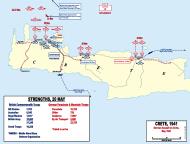


















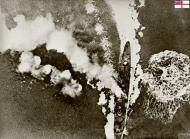
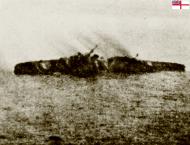

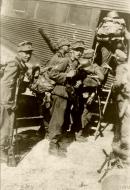




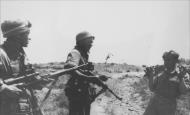






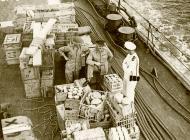







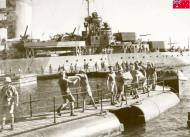
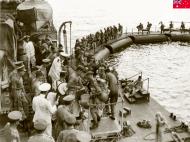

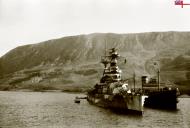

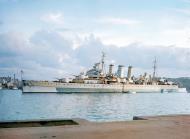











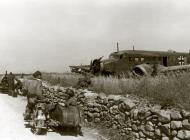



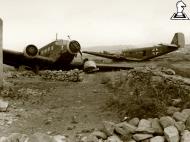
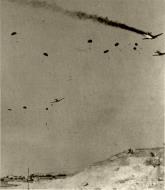
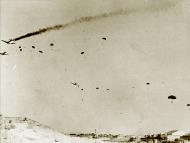
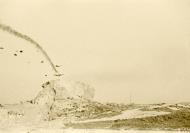
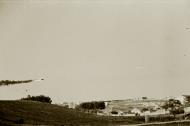

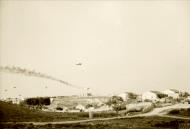
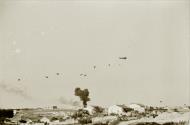
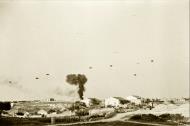






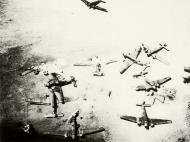















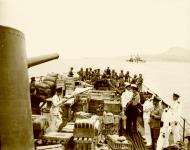









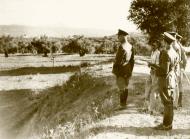







-landing-on-Crete-May-1941-Bundesarchiv.jpg)


